INSIDE THE Industry
Energy Savings Performance Contracting
Public-Private Partnerships
Energy Efficiency as a Service
Welcome to the industry leading publication for the Energy Services Industry.
Virginia Department of Military Affairs to achieve $6 Million in Energy Reduction through Continuous Commissioning
Interviews with Carilyn Shon, Hawaii State Energy Office & New Mexico Energy Engineer, Erica Velarde, PE
Kansas State Energy Program creates innovative K-12 Energy Education Tool
Plus Much More
1, VOLUME 1 NOVEMBER/DECEMBER 2019
1
ISSUE
+
+
ENERGY SERVICES TODAY

WESCO Lighting Solutions Is The Partner ESCOs Trust
ENERGY SERVICES CONTRACTING // WESCO Lighting Solutions for ESCOs
We are the premier lighting and lighting controls partner to help identify, qualify, and win projects. We provide full turnkey design-build services including audits, design, installation, commissioning, and measurement and verification support for complex projects within the United States and internationally.
PROSPECT LEADS: We have over 500 branches across the globe with past project experience that are ready to provide prompt responses to meet tight deadlines.
MAXIMIZE SAVINGS & MARGINS: We are the #1 electrical distributor in the U.S. We put our buying power to work for ESCOs to keep them competitively priced and preserve their margins.
REDUCE RISK: Our highly trained and experienced audit team are singularly focused on accuracy, leading to fewer schedule/cost impacts and expediting timelines.
INCREASE VALUE WITH INNOVATION: We maintain relationships with all leading manufacturers, allowing us to meet any spec and access all innovative product introductions.
WESCO Does Things Differently
• Guaranteed rebate discounts
• Access to ALL manufacturers’ brands
• Multiple options that meet Buy American Act requirements
• Collaborative support during commissioning, as well as pre/post measurement and verification
• Calculated lighting ECM savings
• Open book pricing and savings calculations
• Global footprint with 13 years in turnkey lighting retrofits
PROVIDE A TRULY TURNKEY SOLUTION: We provide a single point of accountability utilizing our specialized project management resources, proprietary software, and in-house photometry services.
2
For more information on the support WESCO Lighting Solutions can provide your organization, contact: ANDREW BOND abond@wescodist.com (303) 587-4185
wesco.com
We are the ideal ESCO partner when assistance is needed to...

3 4 INDUSTRY EVENTS SCHEDULE 6 LETTER FROM THE PRESIDENT 8 FRONT LINE 14 INDUSTRY SPOTLIGHT 16 MEASUREMENT & VERIFICATION 18 BEYOND THE SAVINGS 24 EXPERT INSIGHTS 26 MISSING LINK: EDUCATION & CHANGING BEHAVIOR 28 RESOURCES 8 - 10 Cover Feature Interview with Hawaii State Energy Office, Carilyn Shon 11 - 12 Cover Feature Interview with New Mexico’s Energy Engineer, Erica Velarde, PE 16 - 17 Cover Feature Continuous Commissioning leads to $6 Million in Energy Reduction 26 - 27 Cover Feature Can you crack the code? Kansas State Energy Program creates Breakout Room to educate K-12 Students on Energy Efficiency CONTENTS
2020 Industry Events Schedule
January 21 - 23
February 3 - 4
February 4 - 7
February 10 - 14
February 23 - 25
February 25
March 2 - 4
March 12
March 17 - 19
March 23 - 25
April 5 - 7
April 21 - 22
May 18 - 19
June 2 - 3
June 8 - 10
June 16 - 17
June 24 - 25
American Council for Energy-Efficient Economy (ACEEE) Conference on Health, Environment, and Energy
The U.S. Healthcare Project Delivery Conference
National Association of State Energy Officials (NASEO) Energy Policy Outlook Conference
Campus Energy 2020 Conference and Trade Show
2020 Higher Education Climate Leadership Summit
American Council for Energy-Efficient Economy (ACEE) Rural Energy Conference
The Public-Private Partnership Conference (P3C)
National Association of Energy Service Companies (NAESCO) Federal Market Workshop
National Facilities Management & Technology (NFMT) Annual Conference
American Council for Energy Energy-Efficient Economy(ACEE) Hot Water Forum
Higher Ed Facilities Forum
Association of Energy Engineers (AEE) AEE East Energy Conference & Expo
The P3 Water Summit
American Council for Energy-Efficient Economy (ACEEE) Energy Efficiency Finance Forum
U.S. Department of Energy (DOE) Better Buildings Summit
National Association of Energy Service Companies (NAESCO) Technology & Financing Conference
Association of Energy Engineers (AEE) AEE West Energy Conference Expo
New Orleans, LA
San Diego, CA
Washington, DC
Denver, CO
Atlanta, GA
Chicago, IL
Dallas, TX
Washington, DC
Baltimore, MD
Atlanta, GA
Pasadena, CA
Cincinnati, OH
San Diego, CA
White Plains, NY
Arlington, VA
Chicago, IL
Seattle, WA
4
July 11 - 14
August 1 - 3
August 6 - 7
August 11 - 13
October 4 - 6
October 24 - 25
November 16 - 18
December 3 - 4
National Association of Colleges and Universities (NACUBO) 50th Annual Meeting
Association of Physical Plant Administrators (APPA) 2020 Annual Meeting & Exhibition
The P3 Airport Summit
U.S. Department of Energy (DOE) Energy Exchange
National Assocation for Lighting Management Companies (NALMCO) 67th Annual Convention and Trade Show
The P3 Higher Education Summit
National Association of Energy Service Companies (NAESCO) Renovate, Retrofit, Reduce Conference and Show
The P3 Government Conference
Washington, DC
Boston, MA
San Diego, CA
Atlanta, GA
Atlanta, GA
San Diego, CA
Austin, TX
Washington, DC
5

WELCOME TO ENERGY SERVICES TODAY
- JULIE CHESNA PRESIDENT, ENERGY SERVICES MEDIA
LETTER FROM THE PRESIDENT
Welcome to the inaugural issue of Energy Services Today, a publication of Energy Services Media.
When we first became exposed to the energy services industry we saw broad examples of innovation that were going un-noticed. We met people who were changing and improving their organizations, who were under-recognized. We found organizations, big and small, that were forging ahead into the world of sustainability using new technologies and customized financial models. Many existing media platforms overlooked the accomplishments of the industry. Out of this research came the idea for Energy Services Today
Industry History
The industry has grown and evolved over time to become, what some believe to be, a $10B industry but it has not always been the dynamic market that it is today.
In the early 1990’s public sector facilities managers had little ability to impact their energy use. They often requested funds to do energy efficiency upgrades but were denied in favor of more pressing priorities. If they were lucky enough to get funds, the energy they saved would be returned to a general account through a zero-based budgeting practice. They often were only able to do projects that had a very quick payback, often as short as three years. In the unlikely event that they received funding for the energy efficiency project, they were often required to hire consultants, prepare plans, and bid out the projects. This was often slow, costly, and did not have accountability to results. Many projects did not achieve the desired savings and the industry floundered.
When the first Guaranteed Energy Savings Performance Contract (GESPC) also known as Energy Savings Performance Contract (ESPC) project was considered, it shaped a model that suggested that, for the first time, the budget for utilities (an operational budget) could be used to retire a long term debt. The logic was that if the savings were guaranteed by a qualified company, over the term of the contract, it would be considered an investment-grade opportunity. Politicians, legislators, and facility directors all got behind the idea.
From 1990 through 2000, as many as 40 states adopted resolutions to support the Energy Services industry. As the industry grew, standards were developed.
6
In the mid-1990s, the International Performance Measurement and Verification Protocol (IPMVP) was created which established the first operating standard for energy savings guarantees. In that same time frame, the National Association of Energy Service Companies ( NAESCO) also created a formal accreditation program to further reinforce new standards for the industry. As the industry broadcasted new quality standards, the industry grew into the dynamic market that it is today.
Energy Services Today
Today’s energy services market consists of projects with 20-30 year paybacks that address whole building retrofits. Public-Private Partnerships are stretching projects and financing terms to 40 years. Energy services projects are addressing such under-funded projects as deferred maintenance, resiliency, and renewable energy. This seems to be only the beginning of a new age in energy services. Other complicating issues such as grid reliability, limited water resources, and greenhouse gas emissions insure that the energy services industry will evolve, adapt and attract new people into the industry.
The readers of Energy Services Today range from industry leaders and experts to those who may just be learning about the industry for the first time. This first issue was distributed to over 8,000 individuals in the public sector, including key decision-makers of K-12 Schools, Universities & Colleges, Hospitals, State and Local Governments, and Federal Agencies. We expect to double our distribution over the next year.
Energy Services Today is a resource and platform of communication for the Energy Services Industry. Our content is curated through the knowledge and experience of the industry. This is conducted through interviews and research. Guest writers, who are industry leaders and experts, will also make a splash in the publication. In this publication, you’ll find the following sections:
Front Line: Interviews with State Energy Offices & Programs
Industry Spotlight: Highlighting an industry-leading organization
Measurement & Verification (M&V): Stories and interviews discussing the benefit, process, and best practices for M&V
Beyond the Savings: Stories detailing projects producing outcomes beyond energy savings.
Missing Link: Education & Changing Behavior: Stories and interviews illustrating programs and games that have been created to educate and demonstrate how to be conscious of energy use, energy efficiency, and sustainability
Resources: Descriptions of organizations and tools available in the industry to help guide and build energy programs.
Energy Services Today is a quarterly publication of Energy Services Media. The 2020 Media plan will feature the following:
• February/March: Public-Private Partnerships (P3), Higher Education Profiles
• June/July: Energy as a Service (EaaS), ESPC, PACE and Renewable Energy
Our Gratitude
The creation of the publication has been a journey, and there were many individuals and organizations along the way that made it possible. I genuinely appreciate all of those that were a part of this first issue and shared my vision and belief in Energy Services Today. Thank you to the following: Carilyn Shon & Hawaii State Energy Office, Erica Velarde & New Mexico State General Services Department, Tim Unruh & the NAESCO Organization, Chris Halpin & Celtic Energy NV5 Team, Jim Rufo & Virginia Department of Military Affairs, WESCO Team, Russ Schumacher & Nexus Solutions Team, Tom Hogan & ABM Team, David Birr, David Carter & Kansas State Energy Program Team, Jim Arwood & ESC Organization, David Terry & NASEO Organization, Michael Nenni, Dr. David NieKamp, and the Nenni & Associates Team. In addition, thank you to the State Energy Offices that responded and participated in the Pre-Qualified ESCO listing.
The opinions and statements made either in editorial or advertising copy are those of the authors and do not necessarily constitute endorsement by the publisher. All submissions become the property of the publisher. All right reserved. No part of this document may be produced in print or digital form without express written consent by the editor.
7
FRONT LINE

INTERVIEW
Carilyn Shon
Chief Energy Officer
Hawaii State Energy Office
Carilyn Shon is the Chief Energy Officer of the Hawaii State Energy Office, a post she was appointed to on July 1, 2019. As the CEO, Carilyn develops, manages, and implements statewide energy programs, policies, and initiatives that support Hawaii’s clean energy transformation.
Carilyn comes with 17 years of experience as the Energy Efficiency Program Manager where she was responsible for implementing projects and programs that contribute to the Hawaii Clean Energy Initiative and the state’s energy self-sufficiency and efficiency objectives.
Through her leadership Hawaii has received three National Governors Association (NGA) awards for participation in the Policy Academy on Advanced Energy Strategies for Buildings and the Center for Best Practices, as well as participation in NGA’s workshop on Innovations in Energy Efficiency Policy. For eight consecutive years Hawaii has received national recognition from the Energy Services Coalition’s (ESC) Race to the Top award as the leader in per capita investments achieved in performance contracting and for “outstanding commitment to energy efficiency, environmental stewardship and economic development through Energy Savings Performance Contracting.” In 2016, 2017, and 2018, ESC also recognized the State of Hawaii as an Energy Stewardship Champion for “the state’s outstanding accomplishments in leveraging Guaranteed Energy Savings Performance Contracting to achieve infrastructure modernization, environmental stewardship, and economic development.” ESC is a national nonprofit organization of experts working together to increase energy efficiency and building upgrades through energy performance contracting.
In 2015 Carilyn was honored with the Manager of the Year award for DBEDT. Carilyn recently spoke at the 2019 National Association of State Energy Officials (NASEO) Annual Conference.
The State of Hawaii is currently sitting at the helm of the most ambitious energy goal in the country. Since 2008 Hawaii has been looking forward with one thing in mind, operate state-wide on renewable energy. With an original goal to operate on 70% clean energy, recent leadership was confident enough to bump that goal up to 100% clean energy by 2045. We sat down with Carilyn Shon, Chief Energy Officer, from the Hawaii State Energy Office to check on the status of the initiative at the 10-year mark.
What were the key drivers behind creating the Hawaii Clean Energy Initiative in 2008?
There are several key drivers. Mainly the high cost of electricity in Hawaii, which was nearly 100% dependent on imported oil for electricity generation, and depending on the price of oil cound be anywhere from 3% - 5%
of our GDP. That is money going out to foreign sources and not to jobs and the economy of Hawaii. So it was rather imperative that we try and get a grip on our energy future.
It was a shared vision by the Department of Energy (DOE) and the governor to create a clean energy future for Hawaii. Consequently, we signed a memorandum of agreement in 2008 for a clean energy future.
In 2009 there was a law passed that codified the Hawaii Clean Energy Initiative, with a 70% clean energy goal. However, under new leadership in 2015, the renewable portfolio standard was increased to 100% renewable energy regeneration by 2045.
Where are you today in reaching your goal?
We are doing pretty good so far. The goal of 2020 is 30%, and we are now at 27.6%. We anticipate that we will make that goal in spite of the Kilauea volcano eruption
8
knocking out a very large geothermal plant. We are also exceeding our efficiency portfolio standard. I believe we can always do better, and that is what we are trying to do.
What have been some of the biggest hurdles in creating the initiative and keeping on track with the progress?
I think the hurdles back then, are still here. Two of those hurdles include getting all stakeholders to continue to support the clean energy initiative and getting people to think laterally. We push people to think, not in silos, but laterally in an integrated logic about how energy impacts all of us in various ways.
Another challenge I think we are still dealing with is balancing competing interests. For example, we are a small geographic area compounded by the challenge of separate islands, and by the fact that these islands are very mountainous. There is not much flat open space. In the small areas of open space and flatter land, there is a competition of renewable energy installations verse land for agricultural use verse land for housing.
gain interest and support. Performance contracting has helped address long term deferred maintenance and bundling improvements from lighting to air conditioning requirements. A lot of government agencies have appreciated the fact that it is a turn-key project.
“We push people to think, not in silos, but laterally in an integrated logic about how energy impacts all of us in various ways.”
Capital improvement projects with government agencies can take 6-10 years. Funding is requested multiple times, once for planning and then for design work. Finally you request funding for construction, and hopefully you get the money, usually not, so then you have to go back and revise your plans and design. All of that takes a lot of years of patience and funding requests. Now include the procurement activity, purchasing, and installation timing. That is a long time, and it is all piece-meal. Performance contracting is excellent because it is turnkey. Depending on how you structure the performance contract, and you have included operations and maintenance. If there is a problem, there is only one contractor, the ESCO, that you will need to work with.
Is there an example of a performance contract that helped towards achieving your goal?
A concern is how to balance the slightly higher cost for renewables verse the longer-term costs for imported oil. As I said, depending on the price of imported oil it could be anywhere from 3-5% of our GDP, that’s money leaving the state rather than bolstering the economy and creating jobs.
How have you been able to gain and maintain stakeholder’s support?
It is a constant discussion with commitment and re-commitment to a shared vision. The stakeholders in the clean energy initiative have been very supportive and aware. The groundwork laid by the initial effort in 2008 and 2009 was pivotal; the support we see today was driven from the early efforts. Another motivator for our stakeholders has been the development of new technology and reduction in the cost of the new technologies.
What is the benefit your team sees in utilizing energy-saving performance contracting (ESPC)?
The Energy Services Coalition has recognized us for eight consecutive years for achieving the highest energy savings per capita. That is done through tremendous effort in terms of continually educating states and county agencies and supporting various agencies as they execute performance contracts. I think, once one agency has started an ESPC and they see success, other agencies
Yes! The airports, which is the largest single-state contract for performance contracting. The ESPC is for 12 of our 15 airports. All of the airports in the state of Hawaii are under one agency, the department of transportation. There is a single contract for roughly 210 million dollars. It is quite a substantial project. It includes over 7 million square feet of buildings, and over 13,000 acres counting the runways and the apron on the runways. We partnered with Johnson Controls. They changed out about 74,500 lighting fixtures, completed several HVAC improvements, and installed photovoltaics on the parking lot covers.
Hawaii’s strategy to achieve its very ambitious goal is one that should be mirrored. Hawaii started from the inside out, educating and involving their stakeholders. From there, they created their case for the necessity of the program and the need for change. Collaboration with the DOE allowed them to move forward with their energy policy. As Hawaii trailblazes on the path to 100% clean energy, they keep their communities well-being at the forefront and continue to find new and creative ways to reach their goal.
9
Continued
The infographic below illustrates the list of completed Energy Performance Contract projects for the State of Hawaii. The left side lists the project name and the payback period of the project. The right side highlights the correlation between the cost of the contract and the total guaranteed net savings. The ESCO is listed on the far right side. For example, U.H. Hilo finalized and signed the contract in 1996, the payback period was 16 years. The total contract amount was roughly $6 million, total savings were $14 million thus the net savings were $8 million. Johnson Controls was the ESCO that partnered with U.H. Hilo on the project.
County of Hawaii 1997–2026
County of Kauai 1998–2012
C&C of Honolulu 2001–2025
Health Systems Corporation 2002–2022
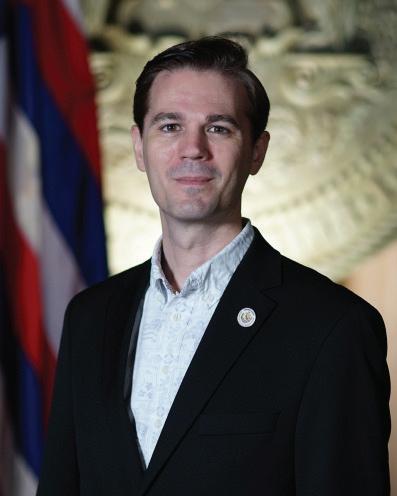
When interviewed, Carilyn was serving as the Interim Chief Energy Officer. As of October 16, 2019, Scott Glenn has taken Carilyn’s place as Chief Energy Officer of the Hawai‘i State Energy Office. Glenn has ser ved as director of the Office of Environmental Quality Control (OEQC) since 2015, where he led the modernization of the state environmental review process by developing new administrative rules and updating best practices. Carilyn’s focus has transitioned to special projects important to the State Energy Office.
For more information on the Hawaii State Energy Office and the Hawaii Clean Energy Initiative visit their website, https://energy.hawaii.gov/. Media Contact: Alan Yonan, alan.m.yonan@hawaii.gov.
10
12 22 24 34 26 34 6 17 310 32 8 11 33 24 486 37 36 6 8 2 / 6 0.5 / 0.7 1.4 / 8 3 U.H. Hilo 1996–2012 2019 COST & SAVINGS PROJECT TIMELINE
Hawaii
Judiciary
Department of Public Safety 2010–2030 UH² Community Colleges 2012–2032 C&C Honolulu Kailua WTP⁴ 2013–2033 DAGS¹ Phase II 2013–2033 1 Department of Accounting & General Services. 2 University of Hawaii. 3 Kauai Campuses—Chevron Energy Solutions. Oahu, Hawaii, & Maui Campuses—Johnson Controls. 4 Wastewater Treatment Plant. Dept. of Transportation 2013–2034 Honolulu Board of Water Supply 2016–2036 DAGS¹ Phase I 2009–2029 Guaranteed net savings SAVINGS OVER LIFE OF CONTRACT, $US MILLION $0 20 40 60 80 100 Contract amount JC H H N JC N N C N A Johnson Controls Energy Service Company: Honeywell NORESCO Chevron Energy Solutions Ameresco JC H N C A JC N JC JC ³
2003–2012
FRONT LINE

INTERVIEW Erica Velarde
Energy Engineer
General Services Department, Facilities Management
New Mexico
Erica Velarde is a New Mexico licensed Professional Engineer, receiving her BS in Mechanical Engineering from UNM, and an AA in Business Administration from Northern New Mexico College. She is employed as the Energy Engineer for the New Mexico General Services Department, Facilities Management Division, and is responsible for the implementation of both energy efficiency and renewable energy projects for over 700 facilities statewide. She is also the Public Co-chair for the NM Chapter of the Energy Services Coalition (ESC), the Public Vice President for the National ESC Board of Directors, and the Vice President of Northern New Mexico Board of Regents.
New Mexico’s State Energy Program has grown and strengthened over the last several years. Since 2013 they have completed roughly $150 million in Energy Savings Performance Contracting. In the fall of 2019, they were awarded the Race to the Top Most Guaranteed Energy Savings Performance Contract (GESPC) investment per Capita award by the Energy Services Coalition.
Erica worked for the State Energy Department, Energy Minerals and Natural Resources, from 2013 – 2018. She then transitioned to her current role with the General Services Department, Facilities Management. Along the way, Erica has earned several awards. Most recently she was named Energy Manager of the Year by New Mexico’s Association of Energy Engineers and New Mexico’s Energy Services Coalition. We interviewed Erica to get an inside look at New Mexico’s success.
Can you give us a snapshot of where the New Mexico Department of Energy is today, and how it has grown and developed in the past seven years?
It’s grown to a point where the energy department staff is back up. We have come from a point where we had a bare-minimum of eleven staff members in the energy department. Now they’re inching their way up to fifteen, and they have a few more positions that they’re advertising for, so it’s grown. As far as the performance program it has taken off since about 2013. In 2013 the bureau chief Brian Johnson worked very closely with the Energy Services Coalition (ESC). Brian is one of the founding members of our ESC chapter in New Mexico.
He went ahead and did the legwork it takes to run a request for proposal (RFP) to create an Energy Savings Performance Contract (ESPC) price agreement for pre-qualified energy service companies (ESCO). The request for proposal was completed in 2013. In 2014, we awarded several providers. That activity sparked interest.
That same year, 2013, one of our largest universities, New Mexico State University, went through a fifteen-million-dollar performance contract. They greased the wheels; they were the first to go through an ESPC. Through that project, the higher education capital outlay committee saw the benefit of utilizing performance contracting. The committee encouraged and challenged colleges and universities to look at what could be performed through a performance contract and be paid for by utility savings instead of asking the state for capital. With that, along with the price agreement, the program quickly took off from there. All but three of our universities and colleges have either completed an ESPC project or are in some phase of an ESPC.
Could you give us an example of an ESPC that you’re taking advantage of right now?
The project that I’m running right now is an excellent example. It’s a 32-million-dollar project being performed on all of our Santa Fe general service buildings. In total, it is a 1.7 million-square-foot project, and it is going to net us a guaranteed savings of 1.1-million-dollars a year. However, we know it’s going to realize closer to 1.4 or 1.5-million-dollars. It will include energy efficiency in 32 buildings. Nineteen of those buildings will have solar PV installed, including three covered parking structures. One building, in particular, will have energy storage along with PV. That one building, located in our capital, Santa Fe, is the only all-electric building in the state.
11
This performance contract provided a unique and creative solution to implement solar PV and battery storage to an all-electric state-owned building. This building needed over two million dollars of HVAC and ducting work. There was no way that they could have funded a full HVAC and ducting remodel with capital. But because we were able to bundle it with all the other savings, we were able to realize this project. We will be using that building as a pilot on how to become net zero.
Are you running into any hurdles with that project?
None so far! It has been a perfect storm. We’re getting so much support right now. We are boots on the ground tomorrow (8/1/19). We will do a walk-through to tackle the schedule and rate of production. We have partnered with Trane Inc., our ESPC contractor, they have been really great to work with. We have a good project ahead of us.
From start to finish, you were able to execute the procurement in 8 months, what are some key factors to the quick turnaround?
We were fortunate enough to have several processes already in place, for example, the Energy Savings Performance Contract price agreement for pre-qualified energy service companies (ESCO), the third-party review program, and a Standard Operating Procedure that was created specifically for the General Services Department (GSD).
Another significant factor was higher-up buy-in and decision-maker buy-in. You have to get those decision-makers to buy in because if you can push from above, sometimes hurdles become less significant because of the powers that be. I would also say that your financial team needs to completely understand the process and the concept and how it all flows through their ledgers. Their world is different from our engineering world.
Over the past decade, how has ESPCs impacted the state of New Mexico?
It has freed up capital. We are an oil and gas state, which means our capital is limited to and dependent on the prices for oil and gas. When you have limited capital, anytime you can find a way to complete a project without using all of your capital, it helps. For example, I served on the higher education board for capital outlay. While I was on board, Clovis community college needed funding, and they needed it as soon as possible. The HVAC system was running on one leg, and they needed money. They were going to request 5-million-dollars through a Government Obligation Bond (G.O. Bond). It can take upward of 2 ½ years after a request to see the G.O. Bond monies. There was no way that they were going to make it another 2 ½ years.
We felt that a performance contract would benefit them, so we asked them to look at the performance contracting method. They were able to complete their project before the G.O. Bond money was ever released to the other institutions. And instead of asking for the full five million dollars, they only needed to ask for two million. So, it freed up three million dollars for other institutions. In a capital strapped state, performance contracting is an excellent method to holistically complete your project.
How have you been able to educate your stakeholders and get them on board with the ESPC process?
“It’s all about finding what your audience’s bottom line is.”
When I first went to interview with the energy office in 2013, they told me that because of the political climate we were in we did not have teeth. We couldn’t push anybody, but we could be cheerleaders. I took that and said, “ok, we’re energy cheerleaders.” It’s all about finding what your audience’s bottom line is. Does your audience want to save money? Does your audience want to look politically responsible? Are they tree huggers? I lead with that, I’m a tree hugger, I tell everybody, and if you aren’t that’s fine, I’ll hug a tree for you! But if your goal is to save money, well that’s what this process does as well. So, know who your audience is and show your passion, whatever that may be.
The other thing that New Mexico did to support this program is, through a DOE grant, they were able to create a third-party review program. They ran an RFP and got a couple of engineering companies onboard to complete third party reviewing of the performance contracting projects. With that, we were able to provide that extra hand-holding for smaller municipalities or public schools that do not have the expertise on board. For every performance contract, there is a one percent fee that covers the third-party review of that project. They are the ‘owners rep’ throughout the entire process.
New Mexico recently launched the State Building Green Energy Project. The initiative was set to push the state towards achieving energy efficiency. The project will result in lower utility bills and better working environments for state employees. The end goal is to convert 750 government buildings.
Through perseverance and dedication, the New Mexico state energy program has grown to be robust and thriving. With the implementation of the price agreement with Energy Service Companies and the third-party review program, they have been able to provide the resources and structure to start, run, and execute energy savings performance contracting projects.
12
NAESCO offers three Accreditation categories:
• Energy Service Company (ESCO)
• Energy Service Provider (ESP)
•
• Independently reviewed by Industry Exper ts
• (information submitted for
• Promotes industry best practices
• Ensures the integrity of Energy Ser vice Performance Contracting
“SmartWatt takes great pride in being a nimble, agile and customerfocused Energy Services Company.
We feel that NAESCO shares these same values and we are pleased to be part of an organization whose members strive to achieve these same goals. We look forward to collaborating with our peers to advance the industry and look for of our collective customers. ”
Bill Clark VP, Engineering and Development SmartWatt, 2019
NAESCO Accredited ESCO Company
13 Set your company apar t from the competition –Become NAESCO Accredited For more information: www.naesco.org/accreditation
NAESCO ACCREDITATION IS A VOLUNTARY PROGRAM FOR NAESCO MEMBERS

The Power of Knowledge
How Celtic Energy, now NV5, can help you navigate ESPCs, EaaS and other projects
Knowledge is power. When managing complex energy projects, what you don’t know can’t hurt you—but it can cost you. Energy efficiency and distributed generation provide cost-saving opportunities. Yet many property owners lack the resources to self-implement upgrades and instead turn to the energy services marketplace for public-private partnerships (P3) with third-party financing and implementation such as Energy Savings Performance Contracts (ESPCs) and Energy-as-a-Service (EaaS) projects.
Few Facility Managers (FMs) have the knowledge and experience to master all key project phases. They must assess opportunities for cost-effective improvements, identify the best procurement vehicle, articulate objectives for the marketplace, select contractors, negotiate contracts that minimize risk and maximize the probability of success, oversee contractor work to ensure they fulfill their promises, witness commissioning, and measure and verify savings. A trusted advisor with deep expertise and scar-tissue wisdom is vital. That’s where an Owner’s Representative (OR) such as Celtic Energy Inc. (CEI) comes in.
An OR—or Project Facilitator (PF) in Federal work— provides independent third-party review and quality assurance (QA) for energy projects. A construction OR has a narrower focus on in-depth oversight of the building process. An energy services OR provides full-scope project support for the facility owner.
Chris Halpin, founder of CEI—now an NV5 company— understands the power of knowledge. The son of Irish immigrants, Chris was the first person in his family to go to college, became a mechanical engineer and worked for Energy Services Companies (ESCOs). After years of managing retrofits Chris realized that there was no one on the customer’s side of the table to support them and explain how projects worked. He founded CEI in 2000, a pioneer of the dedicated OR role. The name Celtic Energy reflects Chris’s Irish heritage and “green” focus.
CEI’s clients are primarily in the MUSH market (Municipal, University, School, Hospital) plus Federal, State and commercial clients including the Department of Defense, FBI, FDA, NASA and numerous state agencies, universities, municipalities and utilities.
CEI maintains independence and avoids conflicts of interest by never undertaking compensated work with companies that CEI might oversee. CEI sells advice and QA, not equipment, design or financing.
ORs provide the greatest value when involved from the project’s earliest phases. CEI helps owners evaluate potential improvements, with detailed energy audits if necessary. CEI educates key stakeholders with veto power in the client organization to secure their understanding and buy-in early on, such as FMs, purchasing, finance and legal departments.
CEI translates owner preferences and objectives both into RFP language that helps match proposers’ submissions to owner requirements, and into proposal scoring matrixes that inform contractor selection. Best practice requires proposers to use open-book pricing. CEI assists with pre-bid meetings and answering proposer questions. We provide quantitative and qualitative comparative evaluation of submittals. CEI supports selection committees with objective analysis but doesn’t vote.
CEI provides input to contract development and negotiation, but not legal advice. We recommend industry-standard template documents, terms and conditions, e.g., from the Department of Energy (DOE) and the Energy Services Coalition. We prefer an iterative approach to Invest-Grade Audits (IGAs) with review of proposed Energy Conservation Measures (ECMs) at 30%, 60% and 90% of IGA completion to enable owner “go/no-go” decisions for each ECM.
CEI provides construction QA oversight, but not daily onsite monitoring. We witness equipment commissioning. Critically, we provide annual quality assurance reviews of the ESPC/EaaS contractors’ measurement and verification (M&V) of project results. M&V is critical
14
INDUSTRY SPOTLIGHT
for ensuring that projected energy and cost savings are realized by the owner. It often involves poring through reams of data with a fine-tooth comb. One might think M&V would increase project savings, but verified savings are sometimes less than were promised by overly optimistic contractors. Most CEI engineers have Certified M&V Professional (CMVP) accreditation from the Association of Energy Engineers.
Training that sets us apart from other ORs is DOE ESPC PF certification. Of the forty-seven individuals certified as PFs in the USA, only thirty are certified for “all agencies”; CEI employs six of those thirty. For ten years CEI held one of four DOE PF contracts nationwide for Federal ESPCs. CEI personnel sat on DOE’s Commissioning and M&V Best Practices Working Groups.
We like the spirit of the term “Project Facilitator.” We take a collaborative approach with contractors to foster project success without compromising owner interests. Projects must be commercially viable for the P3 marketplace to work, but open-book pricing and rigorous M&V ensure that the contractor doesn’t make unreasonable profits.
CEI is based in Glastonbury, CT with offices in NYC, Northern Virginia, Las Vegas and Reno, NV. CEI’s GSA Contract GS-21F-0076Y simplifies Federal and State agency procurement of our services. We’ve been hired over 135 times nationwide as OR/PF for ESPCs, overseeing all major ESCOs. We also consult on P3 and Energy-as-a-Service (EaaS) projects; renewable Power Purchase Agreements (PPAs);
Christopher F. Halpin, PE, CEM, CEP, CMVP, LEED™ AP
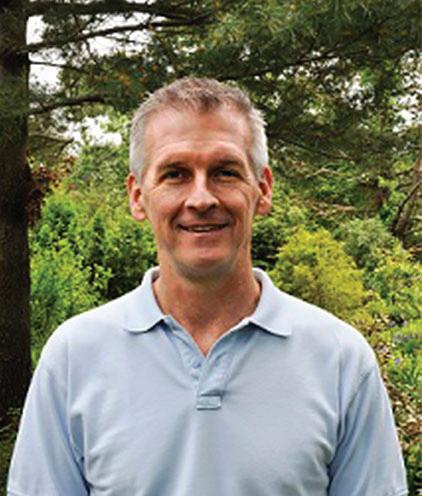
RFP/RFQ solicitations; alternative financing strategies; Energy Conscious Design Review (ECDR) for new facilities; distributed generation; energy assurance, resilience and microgrid projects; street lighting upgrades; green building; Commercial Property Assessed Clean Energy (C-PACE) projects; State energy policy and program design; and enterprise sustainability.
CEI’s personnel have a combined 150+ years of energy experience and have negotiated, sold, managed, engineered, executed, commissioned, monitored and verified over $2 billion worth of projects. We’ve secured over $120 million in government and utility grants, rebates, and incentives for clients in 35 states. We’re vendor neutral, technology agnostic and fiercely independent. We’re Subject Matter Experts in technologies including building automation systems, lighting, chiller and boiler plants, photovoltaics and cogeneration.
In January 2019 CEI was acquired by NV5 and combined with Energenz to form a new energy services consulting vertical, expanding upon NV5’s architectural and engineering design and other service offerings for the built environment. Starting in 2020 we’ll be known as NV5, continuing Celtic Energy’s mission in all but name.

For more information on NV5: www.nv5.com
Walt Donzila CEM,CPC Director of Business Development
Walt.Donzila@nv5.com
Since 1985, Christopher Halpin has worked for several premiere consulting firms and ESCOs in engineering, management, and sales, and is a former Global Energy Manager for NCR. He founded Celtic Energy in 2000 and has acted as an Owner’s Representative for dozens of energy projects. With over 34 years of experience in developing comprehensive energy management programs and dealing with efficiency upgrades, Chris has succeeded at establishing a nationally-recognized consulting firm that focuses on helping clients with their long-term goals of managing energy costs in today’s highly volatile energy markets.
Over the past nineteen years, Mr. Halpin’s numerous accomplishments have contributed to Celtic Energy’s growing success. He was one of NREL/DOE’s four Project Facilitators for FEMP’s SuperESPC Program, where he managed projects for all branches of the US military, Department of Energy headquarters, and other agencies. During that time, he was a member of the DOE’s Commissioning and Measurement & Verification Best Practices Working Groups and continues to help improve the way ESPCs are executed. Chris also manages ESPC projects for the states of Rhode Island, Massachusetts, Delaware, North Carolina, Nevada, New Mexico, and Louisiana, and dozens of cities, towns, hospitals, and school districts. He is a regular speaker at national energy industry events and has briefed Governor’s staffs in several States on energy issues, and testified in front of several Public Utility Commissions and legislatures on various energy efficiency issues.
Mr. Halpin is a registered Professional Engineer in Arizona, Connecticut, New York, Nevada, North Carolina, Pennsylvania, Rhode Island, Maine, and Ireland. He is certified by the Association of Energy Engineers (AEE) as a Certified Energy Manager (CEM) and Certified Measurement & Verification Professional (CMVP), and has been honored as a Legend in Energy. He is also a Leadership in Energy and Environmental Design (LEED) Accredited Professional by the US Green Building Council. Chris is on the Board of Directors of the Energy Services Coalition (ESC) and member of the Society of American Military Engineers Energy and Sustainability Committee.
15
Editorial
Advertisement
Continuous Commissioning leads to $6 Million in Energy Reduction
Interview with Jim Rufo, Virginia Department of Military Affairs
Since 2011 the Department of Military Affairs has executed Energy Savings Performance Contracts throughout the Commonwealth of Virginia. The overall project was implemented at 46 National Guard Readiness Centers, 12 Field Maintenance Shops, Ft. Pickett, VAARNG Aviation Facility, and the Virginia State Military Reservation in Virginia Beach. The largest project was the 42,000 acre Fort Pickett site. The contract team leaders, Cliff White and James (Jim) Rufo built a solid foundation and structure to the program punctuated by continuous commissioning. With resilience at the forefront, they have implemented a process to monitor and track the performance of their projects. Here is an interview with Jim Rufo that gives an inside look into the value of continuous commissioning.
What led you to create a process for implementing continuous commissioning measures?
Over the past eight years, we have implemented over $44-million in energy performance contract work, with a payback between 15-25 years. Over that payback span, we have a total cost avoidance projected at $52,442,408. When you look at the amount of work we’ve done, it represents a lot in taxpayer investment. With this in mind, it leads us to the fact that we have a cost avoidance of over $52 million at stake. Continuous commissioning is the method we utilize that enables us to sustain curtailments of that magnitude.
How did you identify past projects that needed continuous commissioning? Do you look at the whole portfolio, or did you target a selected number?
We look at our whole portfolio. We have a mandated obligation to go back and perform an energy analysis and revisit all of our sites every four years to look for additional opportunities. We also have a performance assurance agreement in place with one of our prime contractors, which is called a “Pass Agreement.” This contractor works under this agreement with our internal O&M Controls team and identifies potential cost issues on our HVAC and controls systems. We are required to perform assessments of at least 25% of our sites each year; however, we realize our fully vested interest is quite significant and conduct ASHRAE Level 1 audits annually at all sites. From those we normally develop at least three
investment grade ASHRAE Level lll audits for submission and to implement.
We constantly monitor our largest consumers of energy remotely and look for deviations and exceptions past our acceptable thresholds. When we see a variance exception in our utility usage, we know that there is something wrong. When we see an issue at a site, we physically go to that site and verify whether the problem is mission-related, a controls issue or a mechanical issue. We avoid dispatching any contractors if the issue hasn’t been vetted by our staff first. This results in maintenance savings.
For example, let’s take a look at Fort Pickett. Our regional training site campus is critical to the operations at Fort Pickett. Due to its complexity and size, it is a large user of power, and if not monitored daily can easily become a challenge. On-site, there is half a megawatt of solar PV and in the facilities over 120 heat pumps along with boilers, ERVs, and primary/secondary hydronic loops with frequency drives. We are looking at opportunities there with punching in wells for ground source heat pumps as well as a battery backup system for the PV array.
A good example for that particular site is when we discovered some anomalies on the incoming power or “line side” where fluctuations in power were resulting in control board failures and compressor motor winding issues. We had to investigate those anomalies and identify whether the issue was actually on the line side, or was it a load issue past our internal main distribution panel. That resulted in transformers being rewound. We find these types of issues and anomalies only through daily monitoring and tracking of utility usage and cost.
Has Continuous Commissioning been ongoing since 2011, or did that start once projects were complete?
Once the projects had been completed and closed-out, continuous commissioning measures were implemented, starting in 2016. Before 2016 we completed retro-commissioning, which involved bringing equipment back to factory specifications every year.
Through the Continuous Commissioning process, have you found other opportunities or things that came up that maybe you were surprised by?
16
MEASUREMENT & VERIFICATION
Yes. I believe that when you have any type of significant contracting performed, it takes a period of maybe one to two years to get your systems optimized. In that period, you’re going to find things that you did not expect. We did not expect to find variances in voltages that caused a 10% failure in our heat pumps at RTI. We were very concerned about this variance of voltage since it would fault our power inverters and literally burn the control board’s input terminal blocks on numerous heat pumps. Control boards usually operate in the 5V – 24V range and are more susceptible to power fluctuations than higher voltage components. When you look at communications voltages of 5V and see a variance of over 10%, it has a tendency to eventually cause continuity issues.
Can you speak about your partnership with your prime controls contractor Schneider Electric and how they are involved in the continuous commission process?
Schneider Electric developed and manages the specific version of software that we use for building automation and energy management. We have requirements that are called “risk management framework requirements” or RMF. These RMF requirements address issues directly
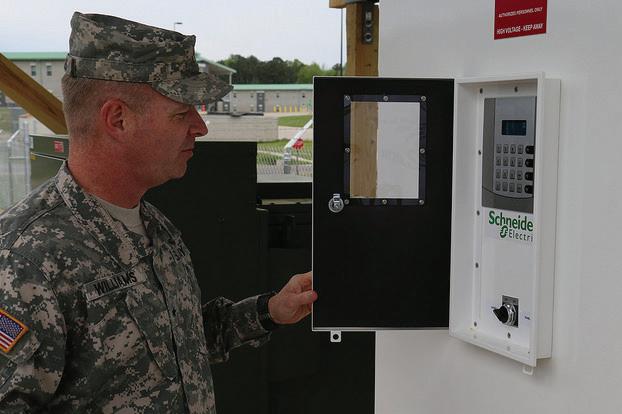

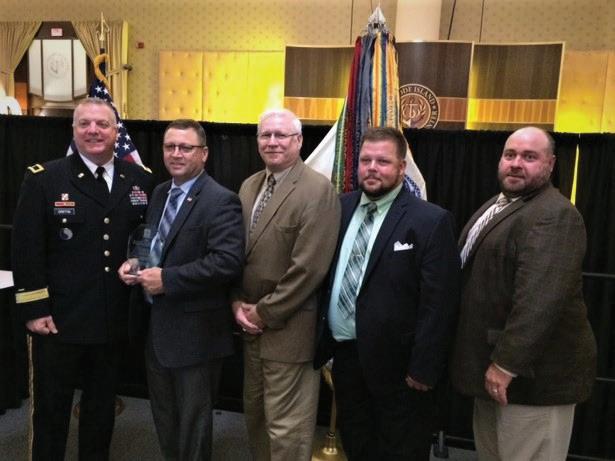
(Left) Brigadier General Paul Griffin, Assistant Adjutant General of Virginia Command Sargent Major Cliff White, CEM, VA ARNG Federal Deputy Facilities Management Officer Mr. Jim Rufo, CEM, CEA, Sustainability Officer, VA ARNG Department of Military Affairs Mr. Aubrey Craven, Utilities Manager, VA ARNG Department of Military Affairs Mr. David Hite, Controls Supervisor, VA ARNG Department of Military Affairs (Recipients of the 2016 Secretary of the Army Renewable Energy Award, Large Installations)
related to cybersecurity. When talking about controls, one must understand that it’s not just controls because those controls are ultimately tied into servers and switches with are integrated into a network. With the risk management framework in place, we maintain a secure status and adhere to all the requirements limiting our vulnerability. We would immediately be pulled from the network and lose visibility if we didn’t mitigate risks on a constant basis. It’s absolutely critical that we have a partnership in place that understands this protocol.
During the continuous commissioning process, is there ever a need for additional funding or capital to correct errors or parts of the project that did not meet expectations?
Yes, it is important to understand that no project is perfect. There are going to be areas that are missed. There are going to be scopes of work that perhaps should have been included that were not. There are going to be times when it’s more cost-effective to use maintenance contractors as opposed to nationally recognized firms when the situation might just involve lack of maintenance. In many cases, we use maintenance contractors to change filters, to purge systems, to drain down cooling towers, and provide quarterly PMs.
What is the value of continuous commissioning?
We realized the value of continuous commissioning by achieving a 15% reduction in excessive use that would have occurred had we not continuously been retro-commissioning or commissioning. That comes out too, roughly, $312,000 a year. Add an inflation rate of 2-3%, and in 20 years, that is $6 million in reductions. So that makes it worthwhile.
17
(Above) Brig. Gen. Timothy P. Williams, the Adjutant General of Virginia, prepares to symbolically turn the switch to send power from the newly-constructed solar array to the administrative and classroom facilities at the 183rd Regiment, Regional Training Institute at Fort Pickett (Photo by Capt. Andrew J. Czaplicki, Virginia Guard Public Affairs) & Solar Array at Fort Pickett
BEYOND THE SAVINGS
Energy Savings Performance Contract (ESPC) results in High School Transformation
Nexus Solutions collaborates with Kenosha Unified School District (KUSD) to create a new learning environment for students
The average student spends 11,700 hours of their life, in a school building, from kindergarten through twelfth grade. (Hull & Newport, 2011) Studies have shown that inadequacies in school facilities and environments can hinder learning and achievement. This was weighing heavy on the minds of the Kenosha United School District’s leadership. The District’s buildings were built in the 1960’s and had limited updates or renovations during their 50 years of operation. Students were learning in outdated and aging buildings, which had a backlog of deferred maintenance. It was time for a change.
Over the past decade the School District explored and completed various facility projects, utilizing capital budgets and referendums, yet there was still more work that needed to be done. Fortunately, the Kenosha Unified Team was able to utilize a performance contract for the additional updates that were needed. After a detailed review and analysis of the energy performance contract process in 2017, the School District awarded several performance contracts to tackle the necessary improvements to their schools. Nexus Solutions, a comprehensive facility solutions company, was awarded Tremper High School. What follows is a detailed look at how an Energy Savings Performance Contract (ESPC) was able to transform the learning environment for Tremper High School.
The Audit
Nexus Solutions was awarded the project in 2017. During that time they had done the necessary homework to lay the foundation, for a successful project, with the Kenosha Unified School District. Through an extensive audit process, the Nexus development and engineering teams walked the halls of Tremper High School to learn the operations of the building. They discovered building deficiencies such as aging plumbing fixtures, cooling and heating, poor performing lighting and deferred maintenance needs (i.e. casework, flooring, tiling, and ceilings). During the audit phase they also focused on identifying and correcting the educational inadequacies.
Russ Schumacher, Co-Founder of Nexus Solutions, stated in a recent interview, “the 1965 building design was not conducive to today’s teaching and learning methods.” Through a collaborative development process, the KUSD administration was able to share how they’d like to deliver education in the future. With open dialogue and collaboration, Nexus Solutions created an Energy Savings Performance Contract that addressed KUSD’s goals.
Inside the Contract
The Energy Performance Contract consisted of:
• Building Envelope: $3.9 Million
• Systems Infrastructure (mechanical & electrical systems): $18.6 million
• Deferred Maintenance: $2.8 Million
• Asbestos Abatement: $500K
The scope of work included:
• Replacing Scotch Marine 52-year-old boilers with High Efficiency Boilers Hull, J., & Newport, M. (2011). Time in school: How does the U.S. compare? Center for Public Education.
18
• Designing the building for lower temperature, 140-degree water temperature versus 180-degree to achieve maximum boiler efficiencies
• Replacing old water with ultra-high (94%) water heaters
• Replacing 52-year-old air handling equipment with new air handling equipment with energy recovery
• Replacing old noisy unit ventilators with new cabinet displacement ventilation units
• Replacing plumbing fixtures with water-efficient type fixtures
• Replacing galvanized plumbing with new copper plumbing to reduce future maintenance from corrosion flaking and plugging fixtures
• Adding cooling to areas where they didn’t have it, specifically classrooms
• Adding variable frequency drives
• Adding LED lighting
• Incorporating PA Clock and Bell system which was dated and not functioning properly
• Replacing ghd fire alarm system
• Installing new direct digital control systems throughout the entire building which was tied into a district-wide monitoring platform at the network level
The total contract value for the Energy Savings Performance Contract was over $28.5 million. The school is projected to see energy, operational and deferred maintenance savings for the life of the buildings.
Scheduling Around the Students
Downtime can be a major concern when working in a high school. Nexus and the Kenosha Unified School District worked hand-in-hand to execute an implementation plan without disruption to the students. The project was broken up into three phases, since a majority of the work had to be completed during the 55 working days of summer. Phase one was completed in the summer of 2018 and involved work on the central plant, the chiller and boiler plants, and one of the academic wings. Phase two was completed in the summer of 2019, which included the second, two-story, academic wing. The summer of 2020 will wrap up the project with the completion of the gym, auditorium, pool, distribution piping, electrical circuity, as well as the school’s educational enhancements.
Transformation of the School
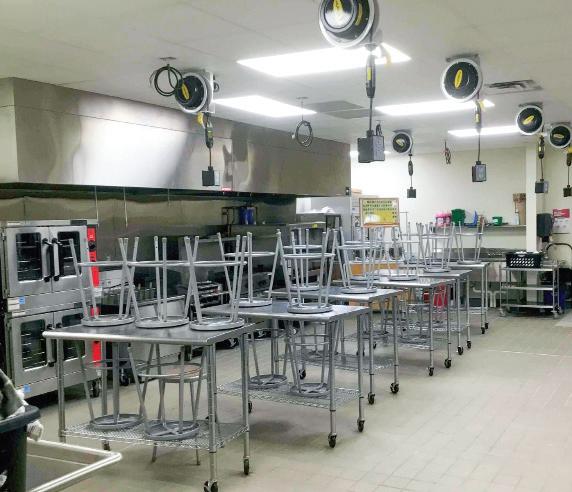
The ESPC provided a creative and pragmatic solution for updating the learning environment for the students. Through bundling all of the upgrades, new technology, and renovations into one Energy Savings Performance Contract, the School District was able to re-direct energy and operational savings to funding classroom upgrades, library and auditorium renovations, and a new secure entrance addition. The school will be completing the following renovations through the ESPC:
1. Home - Economics classroom converting into a Culinary Arts Studio where the students can train for a future in the restaurant business
2. Science and Art rooms are being refurbished with new casework and finishes
3. Main Auditorium is being refreshed with new seating, new carpet paint, sound panel additions so the acoustics would be improved, and ADA compliance
4. Library is converting into a true learning commons, two walls are being removed to make one big space, technology improvements implementation and flexible furniture are being added
19
(Above) Hallway outside of Auditorium (Below) Culinary Arts Studio
5. Resurfacing existing tiles and block wall to refresh outdated interior
6. Creating a new secure Main Entrance
The Value of Bundling Services
“We take a comprehensive look at the facilities with a life-cycle approach, which includes the energy improvements as well as architectural improvements and deferred maintenance needs. The least expensive option may not be the best long-term solution for a district when buildings are being refreshed to serve a couple of generations. Districts are making 40 to 50-year decisions, so we want to make sure that we educate them on the different levels of quality versus the initial price, and then work with them to make a selection,” stated Russ.
When asked what the overall benefit is to bundling energy efficiency upgrades and architectural and interior design renovations into one ESPC Russ Schumacher’s response was this; “Energy efficiency, deferred maintenance and educational adequacy improvements all have to work hand-in-hand to provide an optimal educational environment. The best and most cost-effective time to achieve this, is by planning and implementing them all at the same time.”
Nexus Solutions partnered with Insite Consulting Architects to complete the architectural and interior design services. Photos provided by ICA and Nexus Solutions.

Nexus Solutions is the Midwest’s trusted partner for serving PK-12 public schools’ facility needs. Our team creates innovative buildings, efficient energy solutions, integrated infrastructure and next generation learning spaces that work seamlessly together to deliver on the promise of inspiring students and cultivating communities.
Our commitment to sustainability dates back to 2001, when our team set the standard for K-12 school design with the first LEED-certified school in Minnesota. Our goal of delivering performance on all levels is realized through thriving facilities, students and communities.
With Nexus at the core of your facilities plan, your vision can be achieved. For additional information, please visit NexusSolutions.com

InSite Consulting Architects (ICA), headquartered in Madison, Wisconsin is an award-winning architectural firm that specializes in delivering exceptional K-12 projects to their clients throughout Wisconsin. Their practice focuses on architectural design (including referendum support, master planning, programming and interior design), building enclosure technologies, forensic analysis of moisture-related building failures, institutional facilities management, and construction/contract management.
Over 19 rewarding years, ICA has had a significant impact on the K-12 built environment in Wisconsin while working with a large number of K-12 school districts across the state through their projects, their involvement with WASBO’s educational outreach and development programs, and their commitment to providing valuable services to all of our clients.

Russ Schumacher P.E., CEM, LEED AP Director of Design Services & Co-Founder Nexus Solutions
Russ is a registered mechanical engineer, a certified energy manager, and a LEED accredited professional. Russ, along with Co-Founders Michael David and Brent Jones started Nexus Solutions, seven years ago after working together for decades and designing the first LEED school building in Minnesota. Over the last 20 years Russ and his team have been designing LEED platinum, gold and silver buildings while employing industry leading technology.
20
(Left) Library (Right) Secured Main Entrance
BEYOND THE SAVINGS
How Lighting Upgrades Can Benefit Your Healthcare Facility
On average, lighting accounts for 16% of a hospital’s total energy consumption and over 40% of its total electricity usage. Areas like waiting rooms and hallways are often active 24/7, making lighting a key priority for every healthcare facility. In spite of this information, a lighting upgrade can often seem like a daunting, expensive undertaking leaving decision makers perplexed. In many instances, a lighting upgrade or retrofit project can be tackled quickly, showing rapid ROI due to provincial rebates, financing opportunities and efficient lighting design. In addition to improving energy consumption, taking advantage of opportunities for improvements on a large or small scale also go a long way in improving dedicated labor time, sustainability goals, patient wellness and worker productivity.
Improvements and Savings in Energy Consumption
New lighting fixtures and lamps, such as advanced LED offerings, allow facilities to operate with less wattage while achieving the same level of brightness. In healthcare facility common spaces that operate around the clock, retrofits provide key opportunities for energy savings. Facilities using fluorescent lighting can see 50% or more savings in wattage usage by switching to LED and an 80% reduction when using controls. By utilizing a range of solutions and technologies, such as T5/ T8 fluorescent, LEDs, induction, controls and intelligent lighting, facilities create strategic opportunities to reinvest the resulting short and long-term savings and maintenance time.
Decreased Labor and Downtime
Each time a lamp burns out or scheduled re-lamping occurs a labor cost is incurred. While some organizations may have in-house electricians, many healthcare facilities need to call upon subcontractors to complete this work. In critical areas like operating rooms, changing lamps requires additional labor time to complete full sanitation after the maintenance portion is complete. While the initial cost of acquisition might seem like an obstacle, upgrading to higher quality fixtures and lamps with longer lifespans like LEDs from reputable brands can create a dramatic decrease in overall labor and downtime in facilities.
Demonstrated Leadership with Sustainability Practices
Facilities that opt to use innovative, energy-saving lighting can help meet legislative mandates and demonstrate environmental leadership in their communities. They also directly impact their stakeholders by making cleaner, more responsible energy choices. For healthcare facilities
in particular, recognizing the need for resource conservation and climate protection are key.
RoHS compliant recycling programs can be used to help safely dispose of lighting products in instances where the lamps or fixtures contain mercury. LEDs are mercury-free and create less waste due to their longer lifespan.
A Better Patient and Staff Environment
Several studies have shown that optimized lighting has multiple benefits in healthcare facilities, including:
• Accelerated patient recovery time
• Decreased anxiety in patients and employees
• Increased productivity
For many people, visiting a healthcare facility can be stressful. Lighting can make a positive difference across the board, whether for family members sitting in the waiting rooms for hours, or for patients confined to their beds for weeks on end, or more.
A skilled lighting designer can work with stakeholders on your team to determine the right level of light for each unique space in your facility. Eyestrain and increased stress levels can result from lighting that is too bright, while stimulation of hormones that cause sadness, fatigue and even depression can result from lighting that is too dim. In addition, inadequate or faulty lighting such as flickering fluorescents can distract worker’s attention, or disturb patient’s recovery due to bulb outages and maintenance interruptions.
A lighting strategy planned around providing sufficient ambient and natural lighting create a calming, welcoming environment that encourages a healthy sleep-wake cycle, improves moods and lowers fatigue.
Considering there are thousands of fixtures and lamps within a hospital environment, the opportunity exists for a lighting strategy that provides benefits beyond technical improvements and energy savings. An incremental upgrade or retrofit strategy can tie in solutions for key concerns facing healthcare facilities managers and directors alike– economics, sustainability and technology advancement.
While there typically isn’t a single factor that measures the success of a lighting renovation, an analysis of improvement spanning multiple solutions for each project allows stakeholders to show value in many areas. While energy reduction and savings are a great place to start, overall advancement of the facility and improvement of the quality of lives spent within it is even better.
21
BEYOND THE SAVINGS
The Heart of Centreville Lives On
ABM Saves Historic Courthouse through ESPC
St. Joseph County, Michigan
Historic Saint Joseph County Courthouse sits on West Main street in Centreville, Michigan. The three-storied red brick building with accent trims of sandstone boasts a symbolic 45-foot center tower constructed in the Richardson Romanesque architecture style. Since its construction in 1900 the Saint Joseph County Courthouse has served as the county seat, and the historic building is the center of the county seal. In the 1970s a second building was added known as the courts’ building which now holds the district circuit courthouse. Leaving the administrative offices, county treasurer’s office and Board of Commissioners room in the original St. Joseph County Courthouse.
While the striking exterior of the building is known for its historic beauty, the inside of the building was in need of maintenance and operation updates. The key driver for the project came from the board of commissioners who requested updating the HVAC and lighting systems in addition to proactive upgrades to the historic infrastructure, and its aged equipment. St. Joseph County Administrator, Teresa Doehring was tasked with finding an option for these necessary energy-saving updates to the courthouse. Doehring set out to find a cost-effective solution and referred to their current maintenance contractor, City Plumbing and Heating. City Plumbing and Heating, which is part of ABM Franchising Group’s Linc Service franchise network, recommended Doehring to reach out to ABM for an onsite assessment and information on an Energy Performance Contract.
“Tom and ABM were instrumental in guiding us through the process. I am thankful to our board of commissioners who were able to see the overall goal and vision that ABM offered. Short of this option, I’m not sure that the goals and mission would have been provided,” said Teresa Doehring county administrator.
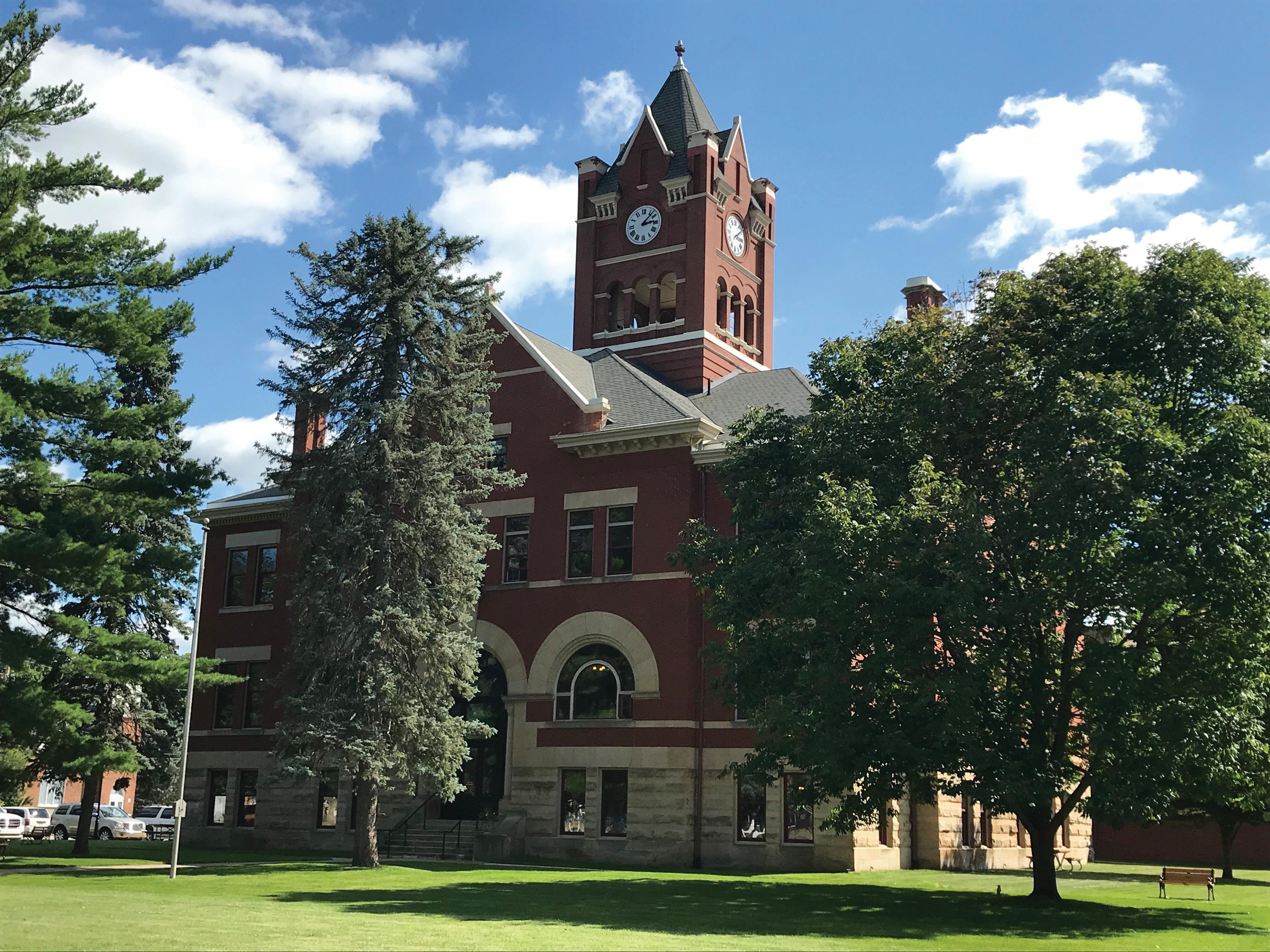
When the ESPC was presented to the finance director, it made financial sense to move forward. Never having worked with an ESPC, ABM was a partner in educating St. Joseph County by answering questions and working to guide the board of commissioners through the process. An EPC contract proved to be a cost-effective solution that provided the upgrades needed without having an impact on the county’s general fund budget. Without an EPC the county would have had to cut programs and funds to the community in order to provide the necessary updates.
“The ESPC was a perfect marriage of what ABM provides and what we needed as an organization,’ stated Doehring. ‘It seemed too good to be true. Everything checked out, we checked off all the boxes, and it was a fantastic solution for us”.
Tom Hogan, Sales Representative from ABM, began working with Doehring and St. Joseph County team. Tom and the ABM team completed an initial audit and based on the scope of work proposed an energy-savings performance contract (ESPC).
With the kickoff complete, ABM has strategically scheduled their work so the courthouse and courts’ buildings would not be impacted by downtime. The primary purpose of the building is to service and provide for the people of St. Joseph County. Working with ABM on the ESPC has allowed the buildings to remain open and operational.
22
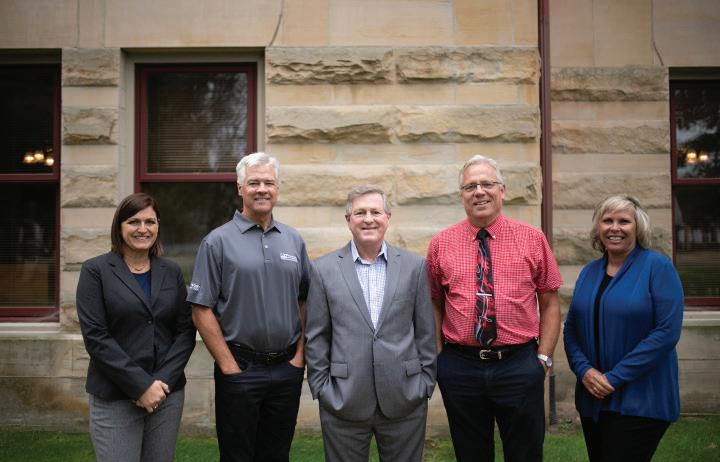
Saint Joseph County and ABM/City Plumbing and Heating Team standing in front of the beautiful sandstone walls that accent the County Courthouse. From Left to Right: Angie Steinman (Finance Director, Saint Joseph County Michigan), Carey Ross (Owner, City Plumbing and Heating), Tom Hogan (ABM Sales Representative), Ross Fisher (Business Development Director, City Plumbing and Heating), and Teresa Doehring (County Administrator, Saint Joseph County Michigan)
“It should be a showplace, a place that people are proud of, and we continue to make efforts to maintain and renovate. We are providing a service, and we need to be available to provide those services; that’s what this building is for”, said Doehring.
With the focus of serving the public in mind, ABM has designed a communications plan that will keep the board of commissioners and citizens informed. Meetings are scheduled once weekly with the ABM and St. Joseph County project team. The board of commissioners receives monthly project updates which are communicated to the community.
Not only did the ESPC allow for utility and operational costs of the building to be lowered, but it allowed the historic building to continue being the heart of Centreville and maintain its service to the people of St. Joseph County.
Project Stats
Contract Executed: June 27th, 2019
Project State Date: June 28th, 2019
Estimated Completion Date: June 1st, 2020
Audit prior to RFP: Yes
Contract Value: $2.4 Million
Energy Savings: > $2.6 Million
Payback Period: 15 Years
Technologies Used: Building Automation, LED Lighting, Chillers, Boilers, HVAC Armor, Building Envelope
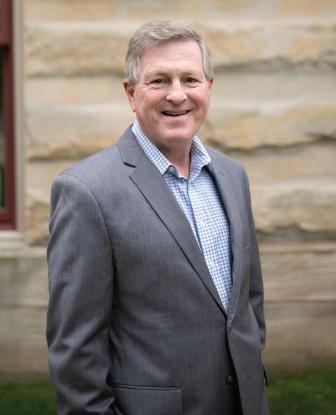
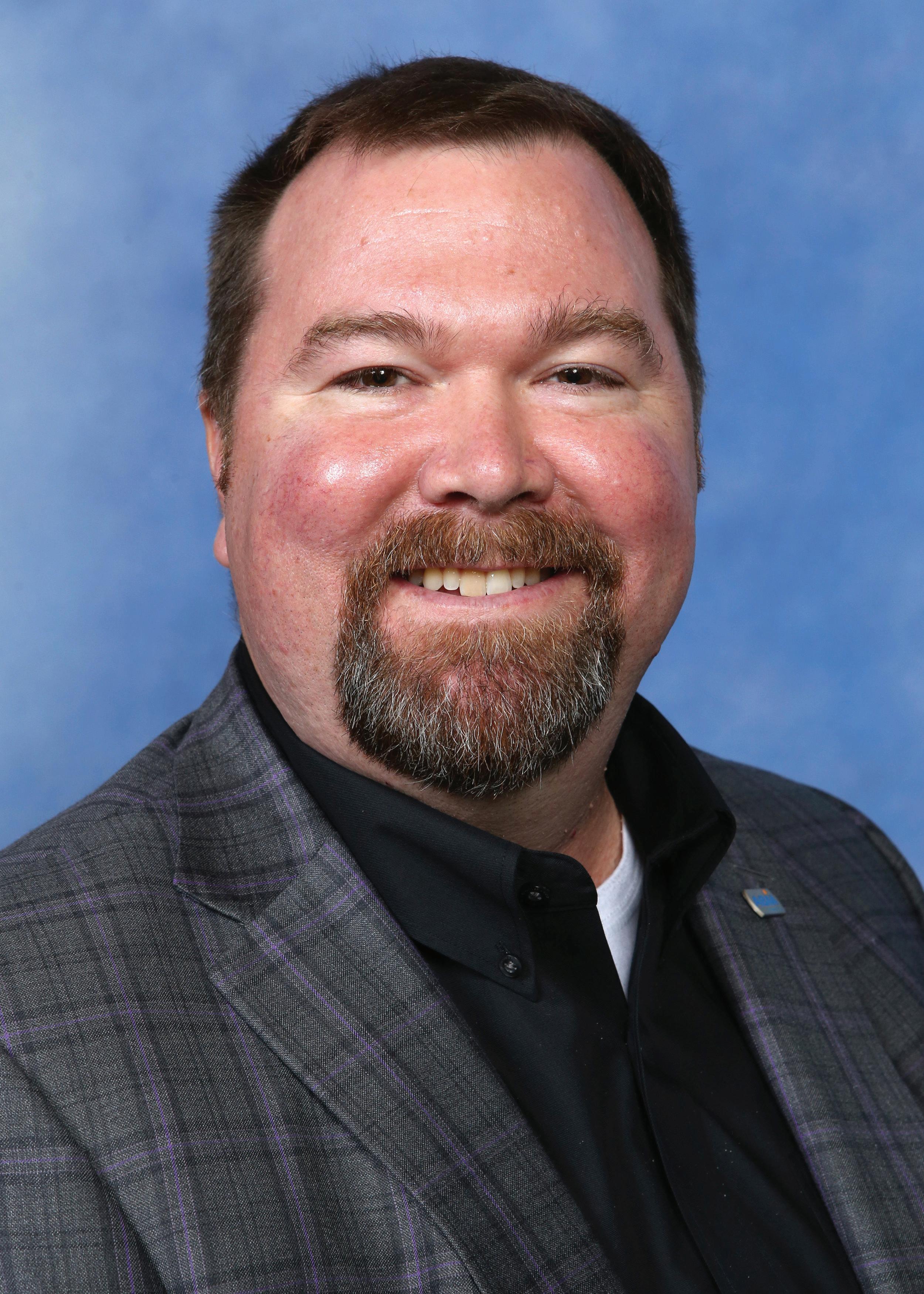
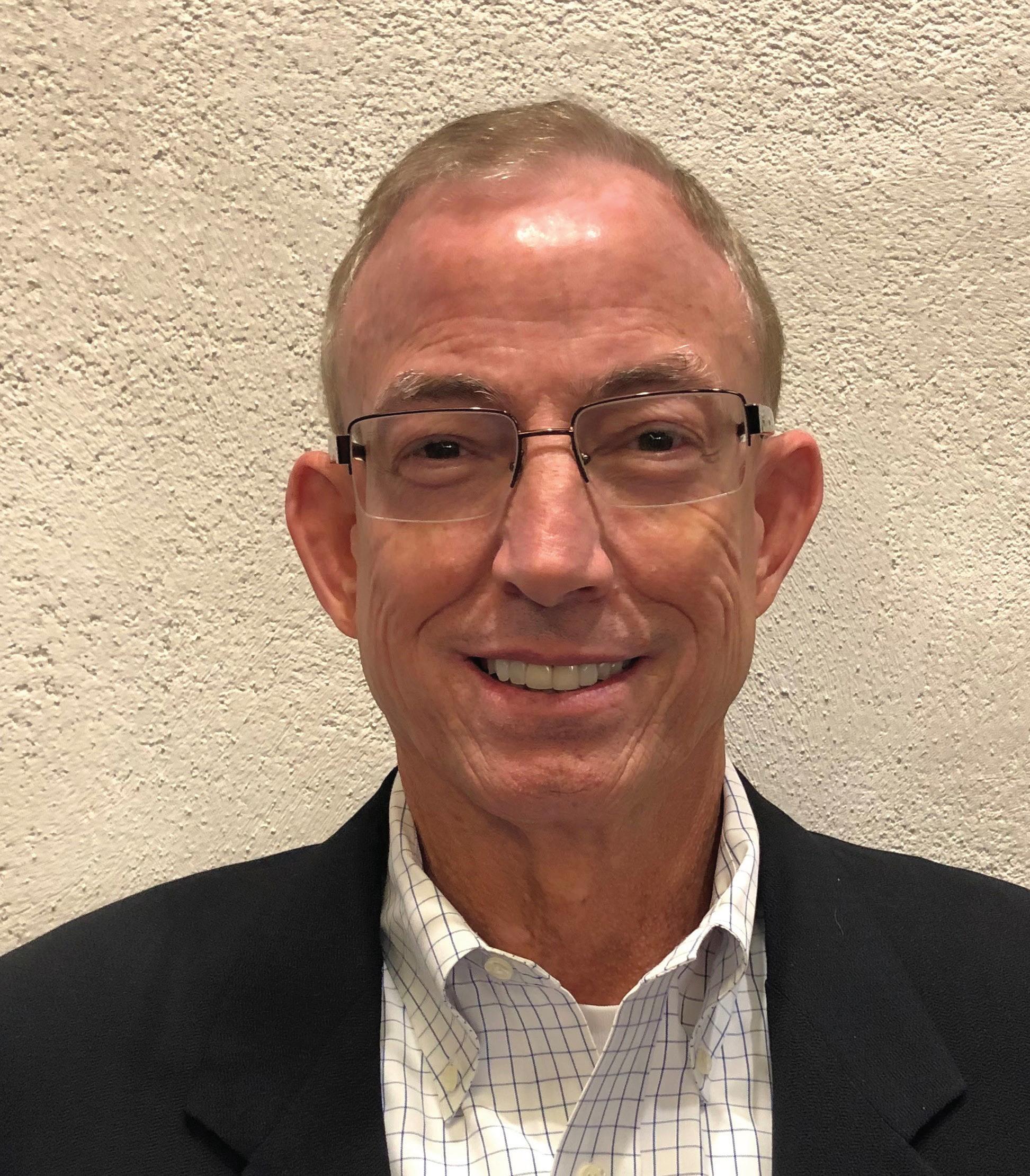
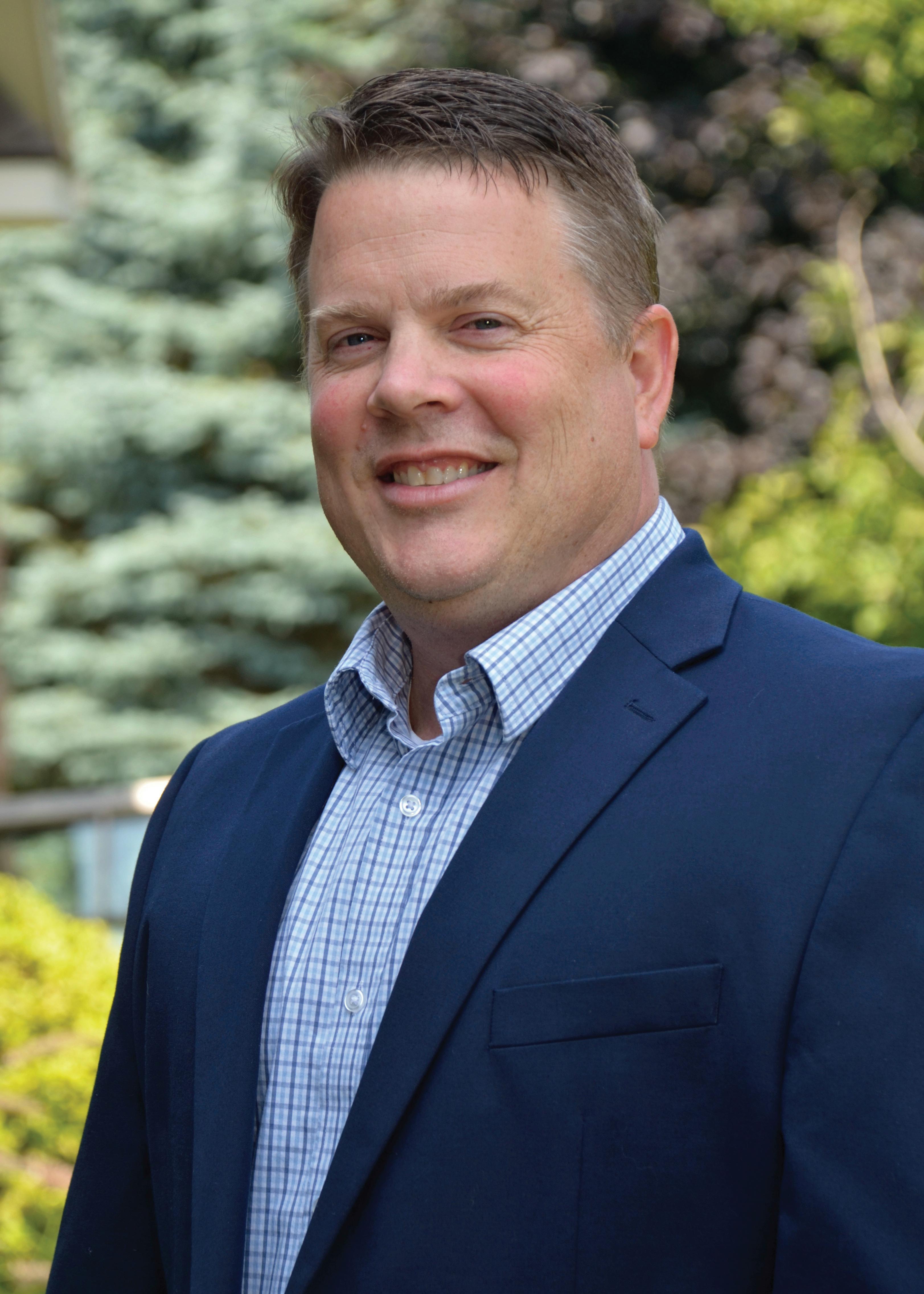

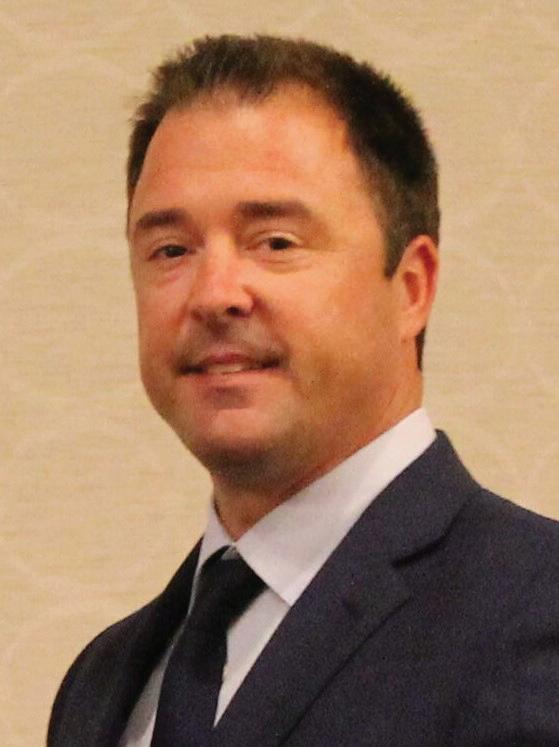
23
Nathan Botwright Multi-Region Senior Sales Leader
Mike Galletti Director of Project Development
Mark Turner Vice President of Energy Solutions
Dan Dowell Senior VP Education Sales and Strategy
Kevin Brown VP, Bundled Energy Solutions Development
ABM Project Team
Tom Hogan Sales, Bundled Energy Solutions
Improve HVAC Performance and Reduce HVAC Replacement Costs
By: Dave Birr, Synchronous Energy Solutions, Inc
Many buildings have major HVAC airflow problems due to dirty systems that waste energy, compromise comfort levels, and generate occupant complaints. Conventional HVAC cleaning does not effectively clean impacted coils and ductwork. Deep cleaning is essential to the proper functioning of variable air volume (VAV) boxes. Dirt buildup on coils can reduce their efficiency by 20% or more. Excessive supply air static pressure damages VAV boxes. Dirty coils and poorly functioning VAV boxes reduce heating and cooling efficiencies and area ventilation effectiveness. Clean coils increase system performance efficiency permitting lower compressor loads and lower fan speeds. Higher air side delta-T can save energy by allowing reduced system airflow. Increased delta-T on chilled water can result in pumping and chiller energy savings. It may even allow you to raise the chilled water setpoint to save energy.
At the 2018 annual NAESCO conference, I met an exhibitor, Pure Air Control Services, which has the best HVAC cleaning process (PURE-Steam Coil Cleaning) I have ever seen. Since the conference, I have been actively working with my public agency clients to adopt it as part of their energy projects. The 14 steps of their cleaning process are briefly explained below:
1. Perform before assessment of coil cleanliness condition to focus cleaning efforts to fix static pressure issues.
2. Perform before and after measurements of coil performance (e.g., delta P and cfm).
3. Introduce multi-enzyme cleaner a patented antimicrobial non-toxic, non-acid enzyme technology to breakdown biofilm and contaminates.
4.Environmentally clean AHU, cooling coils, blower assemblies, and drain pans utilizing PURE-Steam (no chemicals), the GREEN Steam Sterilization Cleaning Process (Green Clean Institute Certified Coil Cleaning Process). Steam temperature is 350 degrees Fahrenheit, and steam pressure is around 350 psi.
5. HEPA vacuum the interior of AHU cabinets using a combination of wet and dry HEPA vacuums.
6. Encapsulate any fiberglass insulation.
7. Disinfect interior with an antimicrobial solution.
8. Perform high volume/low-pressure coil flushing post PURE-Steam, if necessary.
9. Introduce compressed air (100-150 psi), if necessary.
10. Environmentally treat interior of AHU Cabinets with antimicrobial solution
11. Bioactive Coil Treatment - treat the coil surface area to provide a biostatic coating that lasts up to12 month residual protection
12. Perform before PURE-Steam process measurements with Coil Cleanliness Verification.
13. Perform before and after PURE-Steam process Measurement & Verification (M&V).
14. Provide photo log report, Clean Coil Verification report and M&V report before and after remediation.
This cleaning process is suitable for HVAC equipment which is 3-5 tons or larger. Based on average minimal coil fouling of 20%, many of their clients have recognized annual energy savings of $40-60 per ton. The savings from the steam cleaning process can be sustained by doing annual maintenance level steam cleaning which is about 20-25% of the cost of the initial 14 step cleaning process. The return on investment from this steam cleaning process is very attractive for many clients.
Besides energy savings this steam cleaning process provides many significant non energy benefits. Reduced HVAC work orders save building maintenance costs. Improved air flow helps building operators deliver a healthy and comfortable indoor environment. Improved air flow also creates better cooling and heating capacity for the HVAC system. Sanitizing the coils and blower assembly helps improve indoor air quality and extends equipment life. Comfortable and healthy indoor environments improve building occupant well-being and productivity. Existing studies suggest that improved building health and productivity benefits may be significantly larger than the energy and maintenance cost savings. Cleaner HVAC systems reduce owner exposure to the potential liability of occupational illness litigation. Reduced energy consumption reduces environmental emissions, which cause environmental damage. These non-energy benefits avoid potential costs, to the building owner, building occupants, and local community over the life of the building. Selecting a cheaper but ineffective method of HVAC cleaning will not deliver the many energy and non-energy benefits described above.
24
EXPERT INSIGHTS
In addition to steam cleaning of HVAC systems, Pure Air Control Services also provides an HVAC New Life restoration service to extend the life of existing HVAC units as an alternative to immediate replacement with new HVAC equipment. Using its Pure Steam deep cleaning process as a first step, it then installs heavy-duty coatings on non-moving parts of the RTUs that extends the life of those components of the HVAC system. They provide a five-year warranty on the coatings they use. This allows them to significantly extend the life of the HVAC system as long as too many moving parts do not require immediate replacement ( e.g., fans, motors, compressors). Based on their experience, Pure Air Control Services has found that 90-95% of HVAC equipment they have evaluated are good candidates for life extension using the New Life process. The minimum equipment size to be a candidate for this process is 15 to 25 tons. The cost of the New Life restoration process is 10-20% of the cost of replacement with new HVAC equipment. This provides major savings due to avoided capital cost expenditures in addition to all the benefits described above.
This approach also provides many non-energy sustainability benefits. It repurposes existing HVAC equipment and avoids disposal costs to send the old HVAC equipment to a landfill. Due to restoring the equipment in place, there is less disruption and downtime to the HVAC equipment. Due to the scope of the restoration process, the cost and delays of permits are avoided. There are no freight or shipping costs to deliver new HVAC equipment. There is no requirement to rent a crane for installation. By eliminating the energy costs for manufacturing and shipping the new HVAC equipment, environmental emissions are avoided. Restoration in place also provides a faster timeline than the procurement of new HVAC equipment which reduces transaction costs. Customers avoid the costs of renting temporary cooling equipment in some cases.
Pure Air Control Services has numerous detailed case studies of their projects for university and health care clients. For more information, please contact Tony Raszka, Marketing and Communications Director, Pure Air Control Services, Inc.,800-422-7873 ext. 403, PureAirControls.com,4911 Creekside Drive, Suite C, Clearwater, Florida,33760.

Synchronous Energy Solutions, Inc
Mr. Birr has 40 years of experience designing, managing, and monitoring energy efficiency projects in buildings. He is a nationally recognized expert on the energy performance contracting industry. Energy performancing contracting procurement, project management. measurement and verification of savings, maintenance and commissioning of equipment are technical topics he focuses on as an owner’s representative. Due to his expertise in these topics he has served as the sole arbitrator or as an expert witness in contract disputes related to savings performance on energy performance contracts. He has worked on hundreds of energy performance projects for federal agencies, national labs, states, cities, counties, universities, hospitals, public housing authorities and schools. He has been the primary technical consultant for the state energy performance contracting programs in Illinois from 1987-2017 in Pennsylvania from 2001-2010, and in Hawaii from 2007-2019. He has worked on over a billion dollars in energy performance contracting projects. He has presented over a hundred technical energy efficiency and energy performance contracting presentations and training seminars. Many of his technical trainings are in depth multi day events. He has a B.S. in Industrial Engineering from Northwestern University (NU), but he also did extensive graduate level engineering course work at NU for 3 years in energy and environmental engineering. He serves as a voting member on the Accreditation Committee of the National Association of Energy Service Companies.
25
David Birr President
MISSING LINK: EDUCATION & CHANGING BEHAVIOR
Can you crack the code?
Kansas State Energy Program creates Breakout Room to educate K-12 Students on Energy Efficiency
In 2015, The Kansas Corporation Commission (KCC) partnered with the Kansas State Energy Program to assist with the K-12 energy education program. In 2016 their efforts kicked off, and the team was committed to creating an impactful educational resource that could be deployed to K-12 classes throughout the state. The team consisted of David Carter, Program Director, Ryan Hamel, Energy Specialist, and Yvonne Cook, Energy Specialist. The program is funded by a grant from the U.S. Department of Energy (DOE).
When looking for an out-of-the-box educational tool for use in K-12 schools, David, Ryan, and Yvonne were inspired to think inside the room; a ‘Breakout Room’ to be exact. After David and his colleagues learned of the success Breakout Rooms have as a team-building experience, they jumped on the idea of putting a unique and practical twist on the team-building concept.
Through collaboration and diligent planning, the team finalized on a portable Breakout Room that can be played anywhere. It can be either self-administrated or administrated by a Kansas State Energy Program individual.
The premise of the portable Breakout Room is similar to that of an Escape Room. Groups must work together to complete steps, solve energy-related clues, and unlock the last box all within one hour. The lesson focuses on energy efficiency, specifically the consumption of incandescent, CFL, and LED lights. Each clue leads students to scientific instruments to complete each step. Thermal imaging cameras, light meters, and watt-meters are all used to demonstrate the core principals of energy consumption. The final step in the Breakout Room is a journal. These are filled in by each participant as a way to gather feedback and collect the educational impact directly from students. The takeaway has been incredibly impactful. Not only has the Breakout Room promoted team-work and communication, but it has also curated a hands-on way for students to test their knowledge and learn about energy.
Thanks to the grant funding, the portable Breakout Room is free to classes for up to two weeks at a time and comes with comprehensive administrative instructions. The estimated dollar value of the portable Breakout Room is around $6,000. The overall value
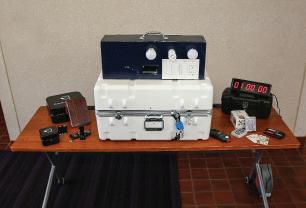
expands beyond the actual activity; it encourages students to utilize their newly gained knowledge at home and inside the classroom. The portable Breakout Room is complete with clues, worksheets, supplies, and equipment, which is prepared by the Kansas State Energy Program team.
The first Breakout Room officially launched in the fall of 2018. Since then, it has circulated ten times, creating a lasting impact on the students and individuals that tried to ‘crack the code’.
The positive results and feedback from the portable Breakout Room has sparked inspiration to create additional themed Breakout Rooms and continuous educational material for those that have completed the activity. Recently a 2nd portable Breakout Room was completed. The focus is on conducting an energy audit. Another idea the team is exploring is a Breakout Room educating the students on wind turbines. The task would be to build a turbine to generate electricity within the time allowed.
Continuous education material is being developed as a follow up for those that have completed a Breakout Room and still have the box in their classroom. The material will include such things as a list of follow up activities that the teachers can do with the equipment that they have. For example, the portable Breakout Room
26
The portable Breakout Room fits into an easy to transport durable case.

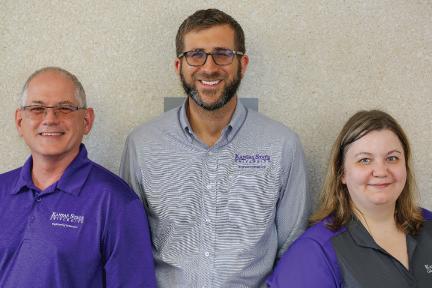
includes a Lightbox that has a power meter. When plugged in it tests the amount of consumption something generates. The students would bring in something they use everything and test its consumption. From there, they can calculate how much they’re personally responsible for. This creates a relatability factor that they may not have experienced before.
With the support of the Kansas Corporation Commission, the Kansas State Energy Program was able to achieve its goal of creating an energy education resource tool for K-12 students. Their solution provides an engaging, creative, and team orientated outlet for learning about energy. The program is excited to continue to develop this resource and to get it into more classrooms.

The Kansas Energy program is housed within K-State Engineering Extension and provides energy education, grant information, and technical assistance to Kansas small businesses, K-12 educators, and governmental entities. Through these services, the team’s goal is to encourage the development and implementation of energy efficiency and renewable energy projects.
David Carter is a Certified Energy Manager (certificate #13856) through the Association of Energy Engineers (AEE) and a Certified Measurement and Verification Professional (certificate #4906) through a partnership between AEE and the Efficiency Valuation Organization. Carter is also a certified auditor for environmental management systems (ISO 14001) and energy management systems (ISO 50001). He has been conducting energy audits since 2008 and has been with K-State Engineering Extension since 2006.
Yvonne Cook is a Certified Energy Manager (certificate #23937) through the Association of Energy Engineers. Cook has been involved in energy audits since 2013. She received her degree in Biological and Agricultural Engineering in May 2011. Cook joined K-State Engineering Extension in 2012.
Ryan Hamel is a Certified Energy Manager (certificate #15745) through the Association of Energy Engineers (AEE) and a Certified Measurement and Verification Professional (certificate #4913) through a partnership between AEE and the Efficiency Valuation Organization. Hamel, a licensed Professional Engineer (State of Kansas, #24799), received his degree from K-State in Biological and Agricultural Engineering in 2007 and has been conducting energy audits since 2008. Hamel has been with K-State Engineering Extension since 2007 with a twoyear stint in the private consulting sector.
Kansas Corporation Commission Energy Office: General: https://kcc.ks.gov/kansas-energy-office Education: https://kcc.ks.gov/education Phone: 785-271-3241
Kansas Energy Program: General: https://kansasenergyprogram.org/ Education (Teachers): https://kansasenergyprogram.org/teachers Phone: 785-532-6026 / E-mail: ksenergyprog@ksu.edu
27
(Left) David Carter, Ryan Hamel, Yvonne Cook
RESOURCES
The National Association of Energy Service Companies, (NAESCO) leads the energy services industry in promoting, developing, and advocating for energy efficiency infrastructure improvements through public-private partnerships in the nation’s public buildings.
Fostering Market Growth
NAESCO works collaboratively with allied trade organizations, policy groups, and customer representatives to accelerate market development and growth. NAESCO also undertakes research on industry trends and practices for the U.S Department of Energy and the national laboratories, the results of which are shared with NAESCO members and the public at large.
Influencing Key Stakeholders
NAESCO’s advocacy work on both the state and federal level has been built around growing market opportunities for ESCOs and their key providers and partners. Our influence is reflected in our success.
Promoting Industry Best Practices and Accreditation
NAESCO members stand by ethical guidelines to help ensure integrity in the performance contracting industry. In addition, NAESCO offers a highly regarded and rigorous Accreditation Program for its members seeking to set themselves apart from competitors in the marketplace.
Forging Networking and Educational Opportunities
NAESCO offers multiple forums for networking and education through high-quality workshops, conferences, and webinars.
Upcoming NAESCO Events:
March 12, 2020 - Federal Market Workshop, FHI 360 Conference Center, Washington, DC
June 16-17, 2020 - Technology and Financing Conference, One North Wacker Drive Conference Center, Chicago, IL November 16-18, 2020 - Renovate Retrofit Reduce Conference and Expo, Hilton Austin, Austin, TX
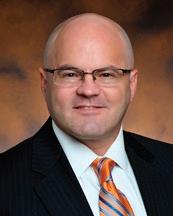
Executive Director
Timothy D. Unruh, Ph.D., PE, CEM, LEED-
Dr. Timothy D. Unruh joins NAESCO after over 26 years in energy efficiency and clean energy development. Most recently, he served in two senior roles at the U.S. Department of Energy (DOE) – Director of the Federal Energy Management Program (FEMP) and Deputy Assistant Secretary of Renewable Power. As FEMP Director, Dr. Unruh helped launch the President’s Performance Contracting Challenge pushing for growth in performance contracting with the Federal Government, as well as eProject Builder targeting a common national platform for ESCO industry data. As DAS for Renewable Power, Dr. Unruh helped develop the Beyond Batteries initiative to explore innovative ways to provide grid services, including using building energy efficiency technologies to improve grid integration with renewable technologies.
Dr. Unruh holds a Bachelors, Masters, and Doctor of Philosophy in Electrical Engineering from Wichita State University in Wichita, Kansas. He also holds professional engineering licenses in 13 States and the District of Columbia.
For more information:
National Association of Energy Service Companies 1667 K Street, NW, Suite 700 Washington, DC 20006 202-822-0950
info@naesco.org www.naesco.org @NAESCONews
28
RESOURCES
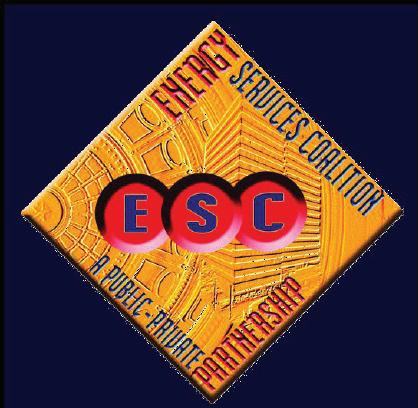
The Energy Services Coalition (ESC) is a national nonprofit organization composed of a network of experts from a wide range of organizations working together at the state and local level to increase energy efficiency and building upgrades through energy savings performance contracting.
Today, the ESC has a network of 25 state chapters located throughout the country. These state chapters reflect the same public/private partnership approach as the national organization. Each is headed by two co-chairs, with representation from a state energy office and an ESCO. ESC’s first state chapter was formed in Colorado in 2001. The main mission of state chapters is to provide statewide on-the-ground education on performance contracting.
ESC provides its members with many resources to facilitate performance contracting projects, energy efficiency improvements, and building upgrades.
- Informative and interactive meetings at various locations across the country provide a forum to address performance contracting issues and to develop business relationships. These meetings also facilitate state-to-state information exchange on “best practices” in marketing and implementing performance contracting projects.
- Workshops on project development, financing, and energy savings performance contracting provide information on new energy-saving technologies and financing options for building and facility owners.
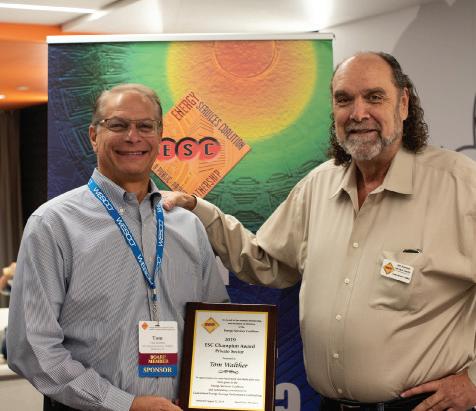
Tom Walther (Left) ESC Champion Award Recipient & Executive Director, Jim Arwood at the 2019 ESC Conference in Denver, CO.
Executive Director, Jim Arwood
Jim Arwood has served as the Executive Director of ESC since 2012. He has more than 30 years of experience working on energy, environmental, and economic issues for such organizations as the Arizona Department of Commerce and the National Association of State Energy Officials. He has won four international film festival awards for his energy-related documentaries. Prior to working in the energy area, Mr. Arwood was the founding-editor of a weekly newspaper in Prescott, Arizona.
- Other benefits available to ESC members include: problem-solving services on performance contracting and financing for building and facility owners, and free educational and technical materials, including standardized documents, such as sample Requests for Proposals and contracts.
- Features of the ESC website include: a listing of individuals representing service providers in each state, and a web-based discussion forum for asking and answering questions about upgrading buildings, performance contracting, and energy efficiency projects
The Race to the Top is part of the ESC’s continuing effort to broaden the demonstration of national non-federal GESPC investment results tracked to date and how each state’s achievement compares in dollars per capita. Past efforts have proven helpful in not only identifying existing or past users of GESPC and charting past achievements, but also for instilling credibility and acceptance of GESPC as a resource.
2019 Winners Include:
Washington, Most GESPC Investment 2019 Hawaii, All-Time GESPC Investment Per Captia Leader
New Mexico, Most GESPC Investment Per Capita 2019
Fred Yebra, Doug Dahle ESC Champion Award Public Sector
Tom Walther, ESC Champion Award Private Sector
29
RESOURCES



The National Association of State Energy Officials (NASEO) is the only non-profit organization for the governor-designated State Energy Directors and over 3,000 staff in each of the 56 states, territories, and District of Columbia. NASEO works with the State Energy Offices to support the development of policies and programs covering energy major energy markets, such as electricity, natural gas, storage, renewables, efficiency, as well as key priorities such as building energy efficiency, clean transportation and mobility, and innovative financing and investment. Public-private partnerships are a core focus of NASEO’s work, in recognition of the energy efficiency, cost saving, and resilience benefits offered by such activities as energy savings performance contracting and other facility retrofit programs.
Affiliate Membership and Engagement – NASEO’s Affiliate Program enables the State Energy Offices to connect with partners in industry, academia, and the nonprofit sector, who provide a valuable resource in their diversity of perspective on energy policy and program issues. Affiliates participate in a range of NASEO committees, such as financing, buildings, resilience, and electricity, which serve as a mechanism for states, businesses, and federal officials to exchange ideas and cultivate partnerships. Other Affiliate membership benefits include:
· Facilitated introductions and access to State Energy Offices directors and their staff;
· Monthly reports on Congressional and Administration actions, including energy bill tracking, budget and appropriations updates, and Congressional hearing summaries;
· Participation and opportunities to present during NASEO committee and regional meetings;
· Input into NASEO conference agendas and priority consideration for speaking opportunities;
· Public-private sector exchange and relationship building on energy issues;
· Distribution of State and Affiliate member news to more than 500 energy-focused state, federal, nonprofit, and private sector recipients of our monthly newsletter;
· Recognition on the NASEO website and in other prominent State and Territory Energy Office communications;
· One pre-paid registration to either the Annual Meeting or the Energy Policy Outlook Conference; and
· Discounted conference exhibit and sponsorship rates.
NASEO’s Energy Policy Outlook Conference, February 4-7, 2020 – Each year, NASEO convenes a conference in Washington, DC to examine emerging energy trends and opportunities with the states, federal agencies, and the private sector. Our 2020 “Outlook” conference will focus on energy sector resilience across mission critical facilities, communities, and energy and water infrastructure.
For More Information visit: www.naseo.org
30
What type of relationship is best for business?
By: David NieKamp, Psy.D Organizational Development Psychologist, Nenni & Associates
As the ESCO industry continues to grow, the field of companies that can deliver high-value projects at competitive prices expands. Some of our key relationships report that important differentiators between organizations can be hard to identify. As a result, these companies are more interested in “driving” projects with key relationships rather than “chasing” projects that are well known on the street. Subsequently, quality relationships are crucial to winning and completing deals in a timely fashion. How then can ESCOs identify, create and optimize these relationships to ensure they drive business more than they chase it.
Clearly, those who have been in the industry long eough to have established solid relationships have the advantage, however, disseminating this experience to the next generation can be tricky. The newbie has likely been infused with the vernacular adage Time is Money. As true as this idiom is, it directly contrasts the equally important philosophy of Relationships Drive Business. Relationships require time and investment, which do not immediately translate into money. Reconciling this tension begins with a clear understanding of what exactly constitutes and defines a relationship, let alone creates key relationships that drive business.
There are three fundamental types of relationships, all of which have merit and build on each other: The Parallel relationship; the Transactional relationship; and the Transformational relationship.
The first is a parallel relationship. This type of relationship is experientially based; this is like watching a movie together, we have similar experiences, but we do not necessarily interact until after the experience. We may discuss the content, production, or plot lines, but we do not engage each other outside of our individual perspective on that experience.
The second type of relationship is the transactional relationship. This type of relationship is exchange-based; this is best portrayed by the check-out line. There is an expected interaction sequence, albeit, you may know anecdotal personal information about the individual, the conversation is a vehicle simply to move us through the transaction and exchange of goods for money. Once the transaction is over, so is the interaction and relationship.
These two types of interactions are important, but neither create a relationship that drives business. They are merely events, suspended in the present that quickly dissolve into the past, creating the necessity of consecutive restarts. Though often necessary, they do not drive business.
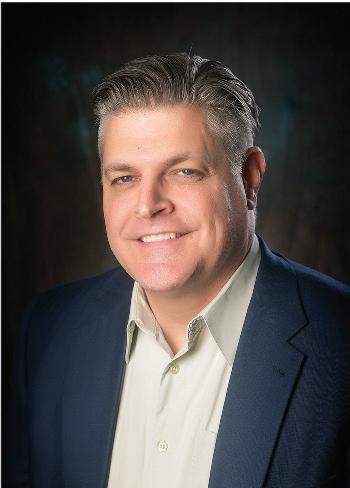
The third type of relationship is a transformational relationship. This type of relationship is the ideal that all organizations strive to achieve and is based on the type and quality of input, more so than volume or quantity. The value of the input is activated only when integrated with the input of others. It is truly relationally based, meaning that regardless of the experience or the type of transaction, the relationship develops and grows; it becomes better than what it was, as do the people in the relationship. In short, words like; trust, productive, profitable and efficient are used to describe the relationship and its output, as opposed to descriptors like; ‘a waste of time’ and ‘unproductive’, or worse ‘destructive.’ If the event or the exchange does not fortify the relationship; make the relationship or the people in the relationship ‘better’; then it is either a parallel or transactional event; nothing more.
Each type of relationship is inherent when doing business. Working in parallel is where companies can learn about what others are doing, taking notes and applying new ideas and observations from others in the industry. Transactions are inherently necessary for all businesses and industries to move through and close out a deal; however, both are limited and neither create the type of relationship that truly drives business efficiently and effectively forward. Transformation is often used to describe relationships and/or events that are actually Parallel or Transactional. When this happens, we wonder why we are still ‘chasing’ business and not driving it! In order to ensure that we are creating relationships that drive business, make sure you accurately identify what type of interaction is needed and drive it toward transformation.
David NieKamp, (a.k.a. Dr. Dave) is a licensed clinical psychologist and has been working in the field of organizational development and leadership design for 20 years. His expertise and experience are utilized by ownership and organizational leadership to create efficient and effective work culture; mitigate risk, improve overall performance and successfully train team members for professional growth. A noted strength of Dr. NieKamp is his ability to move seamlessly between organizational culture and leadership’s personal needs that impact their ability to maintain effective decision making.
Dr. NieKamp is the originator of the unique and powerful, Triad Team Model. The Triad Team Model is a systems-based leadership model, stemming from the theories of Peter Drucker, Edward Demming, Russell Ackoff and more currently, Michael Maccoby. The model identifies and leverages an accurate and simple understanding of fundamental personality structures to create productive leadership teams.
31
RESOURCES
Several State Energy Programs have pre-qualified Energy Services Companies that have been vetted to be eligible to compete for projects with respective State Agencies. This allows the State to develop efficient program delivery standards by identifying companies that meet the minimum requirements of the State. This is an important process for State Agencies to be able to select appropriate companies. Please bear in mind that this is a partial list as some states are currently developing or renewing their lists. We will continue to add and update the listing each issue. Other lists that can be used are the NAESCO list of Accredited Energy Services Providers/Energy Services Companies or the Department of Energy List of Qualified Providers.
While these lists play important roles in each market it is important to understand that there are many other ESCO’s, not on the list, that may be delivering services in that respective market that have strong operational capabilities. For questions reach out to the State Energy Office or State Energy Program for advice and direction.
Colorado
AECOM
Ameresco
CEG Solutions LLC
Honeywell Building Solutions
Iconergy
Johnson Controls, Inc.
McKinstry
Mid-State Energy, LLC.
Schneider Electric
Siemens Industry, Inc.
Trane/Inergsoll Rand
Willdan Performance Engineering
Georgia
ABM
AECOM
Ameresco
ConEdison Solutions
Energy Systems Group
ENGIE
Honeywell
Johnson Controls
Noresco
PRE-QUALIFIED
Yearout Energy Services Company, LLC
As of 10/15/19
Delaware
ABM Building Solutions
Ameresco, Inc.
Opterra Energy Services
CM3 Building Solutions Incorporated
Constellation Energy Project and Services Group
ConEdison Solutions
Energy Systems Group
Honeywell Building Solutions, SES
Johnson Controls
McClure Company
NORESCO
PEPCO Energy Services
Trane
Schneider Electric
Siemens Industry, Inc.
The Efficiency Network, Inc.
Schneider Electric
Trane U.S. Inc.
Wendel
Good Through March 2021
Hawaii
AECOM Technical Services, Inc.
CEG Solutions LLC
ENGIE Services US Inc.
Johnson Controls, Inc.
NORESCO, LLC
Siemens Industry
Trane U.S. Inc.
As of 4/22/19
Indiana
A. Hattersley & Sons Inc.
ABM Industries
Ameresco Inc
Bowen Engineering
CMTA Inc
Energy Systems Group
F.A. Wilhelm Construction Company Inc.
Honeywell International Inc.
Johnson Controls Inc.
Johnson Melloh Solutions Inc.
Mac Construction and Excavating Inc.
Noresco LLC
Perfection Group, Inc.
Performance Services, Inc.
PSG Energy Group
Shambaugh & Son, LP
Selge Construction
Siemens Industry
32
SitelogIQ, Inc.
Thienenman Construction Inc.
Trane U.S. Inc.
As of 9/9/19
Kansas
Ameresco Inc.
CEG Solutions, LLC
Control & Technology Solutions, LLC
Energy Solutions Professionals, LLC
Engie Services US, INC.
Entegrity Energy Partners, LLC
Johnson Controls, Inc.
Navitas, LLC.
Noresco, LLC.
Schneider Electric
Trane US, Inc.
Willdan Energy Solutions
As of 9/30/19
Minnesota
Ameresco, Inc.
Consolidated Edison Solutions, Inc.
Control & Technology Solutions LLC
ENGIE Services U.S. Inc
Nevada
Ameresco, Inc.
ENGIE Services U.S.
Johnson Controls, Inc.
McKinstry
NORESCO
Siemens Industry, Inc.
SmartWatt Energy, Inc.
Trane US, Inc.
Expires 11/11/2022
New Jersey
AECOM Technical Services Inc
Ameresco, Inc.
CM3 Building Solutions Inc.
Constellation Energy, Inc.
DCO Energy, LLC
Direct Energy Business Marketing LLC
Energy Systems Group, LLC
George S. Hall Inc.
Honeywell International Inc
Johnson Controls Inc
ESCOs BY STATE
Harris Mechanical Contracting Company
Honeywell
Johnson Controls, Inc.
McKinstry Essention, Inc.
Noresco, LLC
Siemens Industry, Inc.
Trane U.S. Inc.
Montana
Ameresco, Inc.
Apollo Solutions Group
Chevron Energy Solutions Co.
Eaton Energy Solutions, Inc.
Honeywell International, Inc.
Iconergy
Johnson Controls, Inc.
McKinstry
Noresco, LLC.
OpTerra Energy Services
Schneider Electric
Siemens Industry, Inc.
Temp Right Services
University Mechanical Contractors
As of 2013 - New List Coming 12/1/2019
Schneider Electric Building Americas, Inc.
Siemens Industry Inc.
The Efficiency Network Inc.
Tozour Energy Systems, Inc.
Trane US. Inc.
Willdan Energy Solutions, Inc.
North Carolina
ABM Building Services
Ameresco, Inc.
Black and Veatch
Brady Trane
Burns & McDonnell
ConEdison Solutions
Energy Systems Group, LLC
Honeywell International, Inc
Johnson Controls, Inc.
NORESCO
OpTerra Energy Services, Inc.
Piedmont Service Group
Schneider Electric Building Business
Siemens Industry, Inc. Building Technologies Div.
Trane U.S. Inc.
Wendel Energy Services
As of 2/2/18
33
Pennsylvania (PennSEF Program)
ABM Building Solutions
Ameresco
Constellation
Energy Systems Group
Honeywell Building Solutions
Johnson Controls
McClure Company
NORESCO
OpTerra Energy Services
Reynolds Energy Services
Schneider Electric
Siemens
Signify North America
SmartEdge
SmartWatt Energy, Inc.
The Brewer-Garrett Co.
The Efficiency Network
Trane
Willdan
Under Review
Washington
Ameresco, Inc.
Apollo Solutions Group
ATS Solutions, Inc.
Honeywell Building Solutions
Integrity Energy Services
Johnson Controls, Inc.
MacDonald-Miller Facility Solutions
McKinstry Essention
Siemens Industry, Inc.
Sunset Air
Trane U.S., Inc.
University Mechanical Contractors
Willdan/Abacus Energy Solutions
Wyoming
Ameresco, Inc.
Apollo Solutions Group
Johnson Controls, Inc.
McKinstry Essention, LLC
NORESCO, LLC
Energy Systems Group
Rocky Mountain Trane
Iconergy
Producing valuable and resourceful content is important to us. Is there a specific topic you’d like to learn more about? For example, financing, renewable energy, battery storage, best practices, managing data gathered from ESPC projects, etc. Please contact our team, and we will work to include stories and information about that topic in our next publication or on our website.
Interested in Advertising? Be apart of the next issue.
Our next issue will focus on Public-Private Partnerships (P3).
Reach out to julie.chesna@energyservicesmedia.com to learn more about advertising opportunities or submissions. Our advertising space is limited.
Do you have a story that would fit into the following?
We are accepting submissions for the following sections:
- Industry Spotlight
- Measurement & Verification
- Beyond the Savings
- Missing Link: Education & Changing Behavior
Publisher: Energy Services Media, LLC
Editors: Heather Haffener Connor McGinnis
Contributing Editors: David Birr
David NieKamp, Psy.D
Contributing Photographers: Rebecca L Photography, Page 22-23
Captured Moments Photography, Page 26-27
Contributing Graphic Designers: Richard Skippon Tatiana Temple
34
PRE-QUALIFIED ESCOs BY STATE LISTING CONTINUED...

35 SEEKING TOP TALENT? EXPLORING CAREER OPPORTUNITIES? THE PREMIER EXECUTIVE SEARCH FIRM WITHIN THE ENERGY EFFICIENCY SPACE Contact us TODAY! COREY KRAVITZ, DIRECTOR OF SYSTEMS AND ENERGY • (815) 899-9426 • COREY@NENNIANDASSOC.COM Your partner in executive search, talent management and organization development consulting, and candidate placement. connecting the industry through media Trending News. Request for Proposals Listing. Industry Events Schedule. Quarterly Magazine. energyservicesmedia.com SUBSCRIBE TODAY

Nexus Solutions is dedicated to creating safe, healthy and engaging learning environments for public schools Our

infrastructure and 21st century learning spaces to deliver solutions that inspire students and cultivate communities.

By partnering with public schools of all sizes, Nexus has revolutionized the industry and transformed the facility planning process into a comprehensive approach that helps our clients meet the facility needs of their communities.

Our goal is to deliver performance on all levels, by creating thriving facilities that enhance student outcomes and increase community value.

With Nexus at the core of your facilities plan, your vision for a thriving facility can be achieved.

c o m p r e h e n s i ve a p p r o a c h i n t e g ra t e s i n n o va t i v e d e s i g n s , e n e r g y- e ffi c i e n t
B e t t e r B u i l d i n g s . B e t t e r L e a r n i n g . NexusSolutions. com P L A N F U N D D E S I G N B U I L D











































